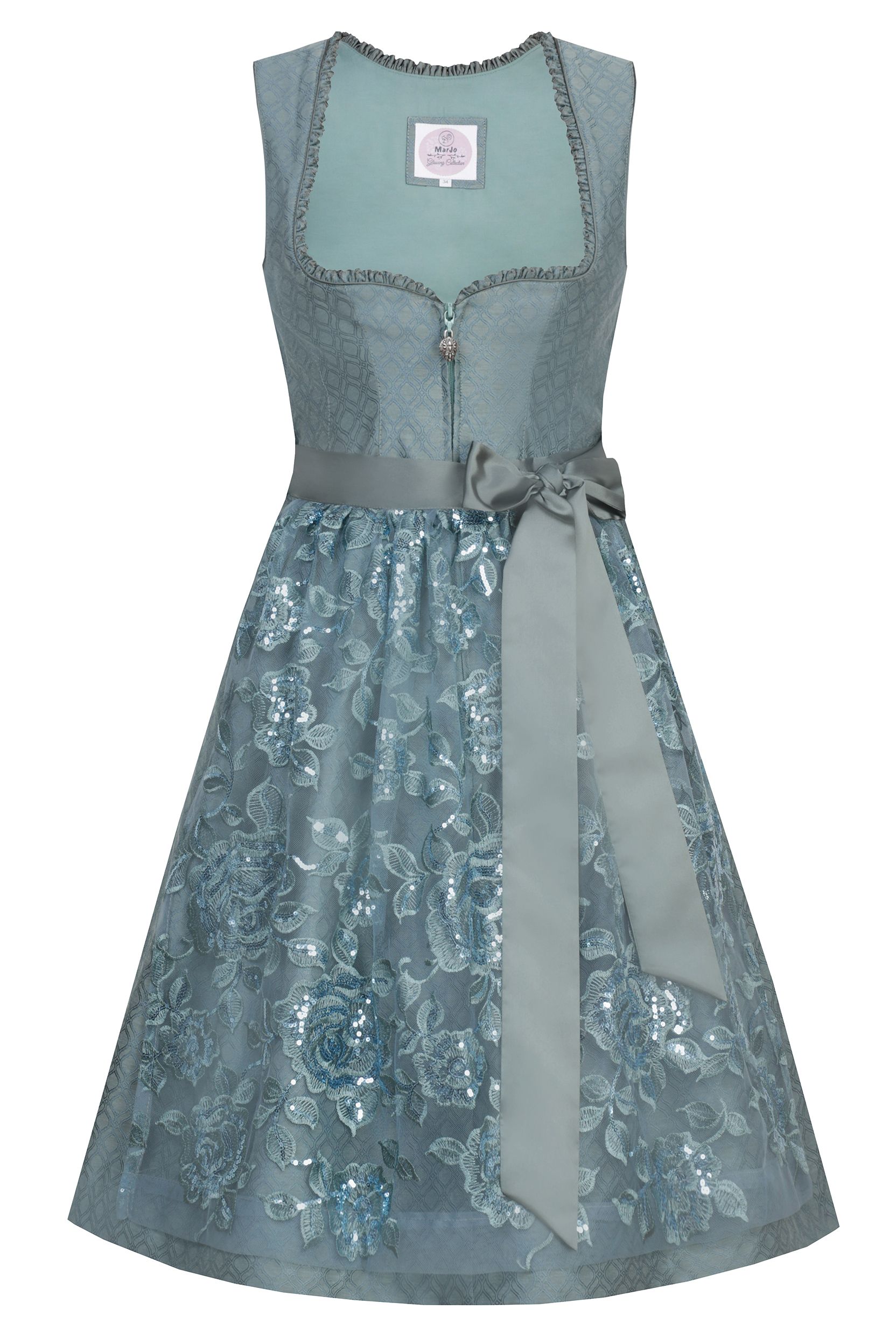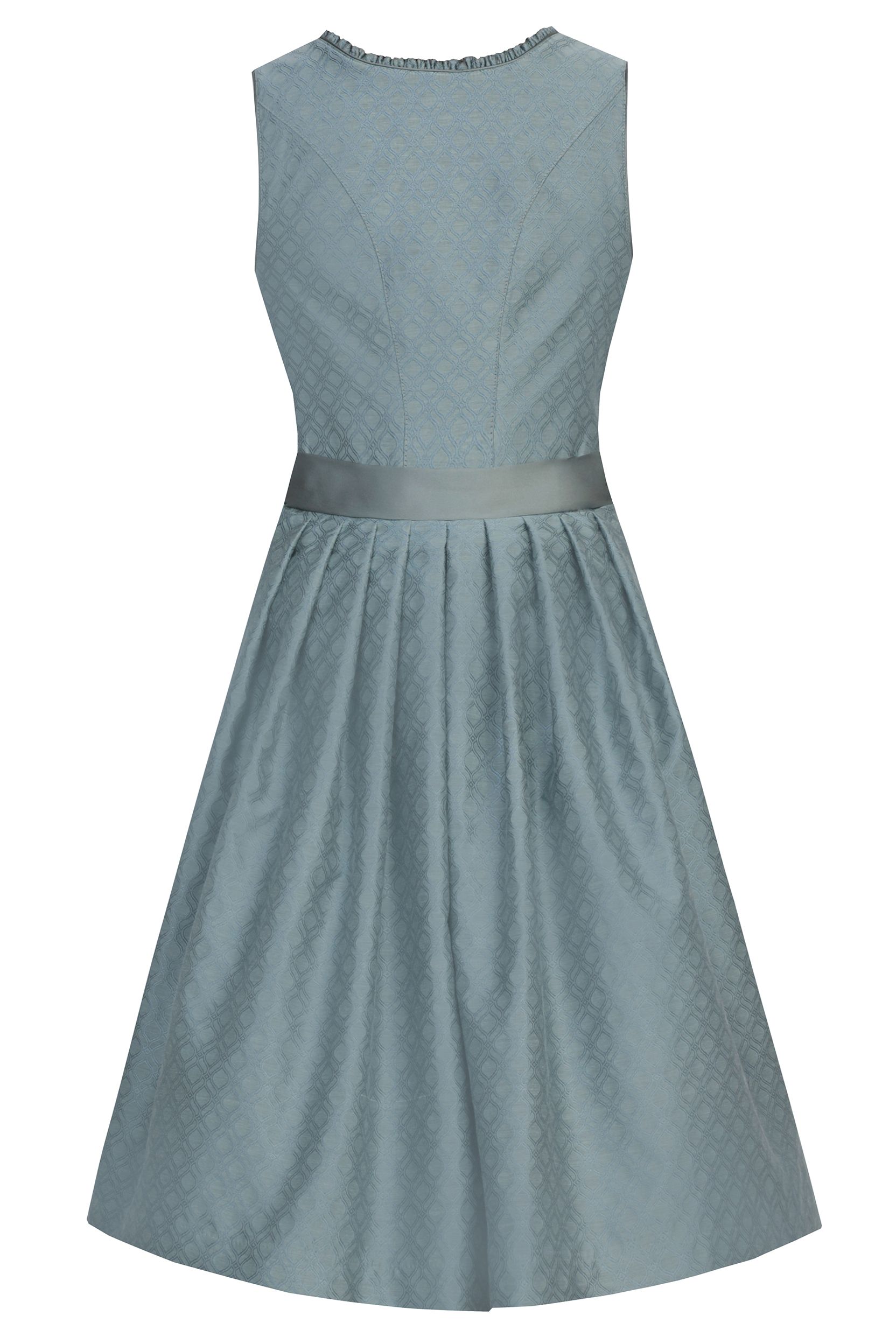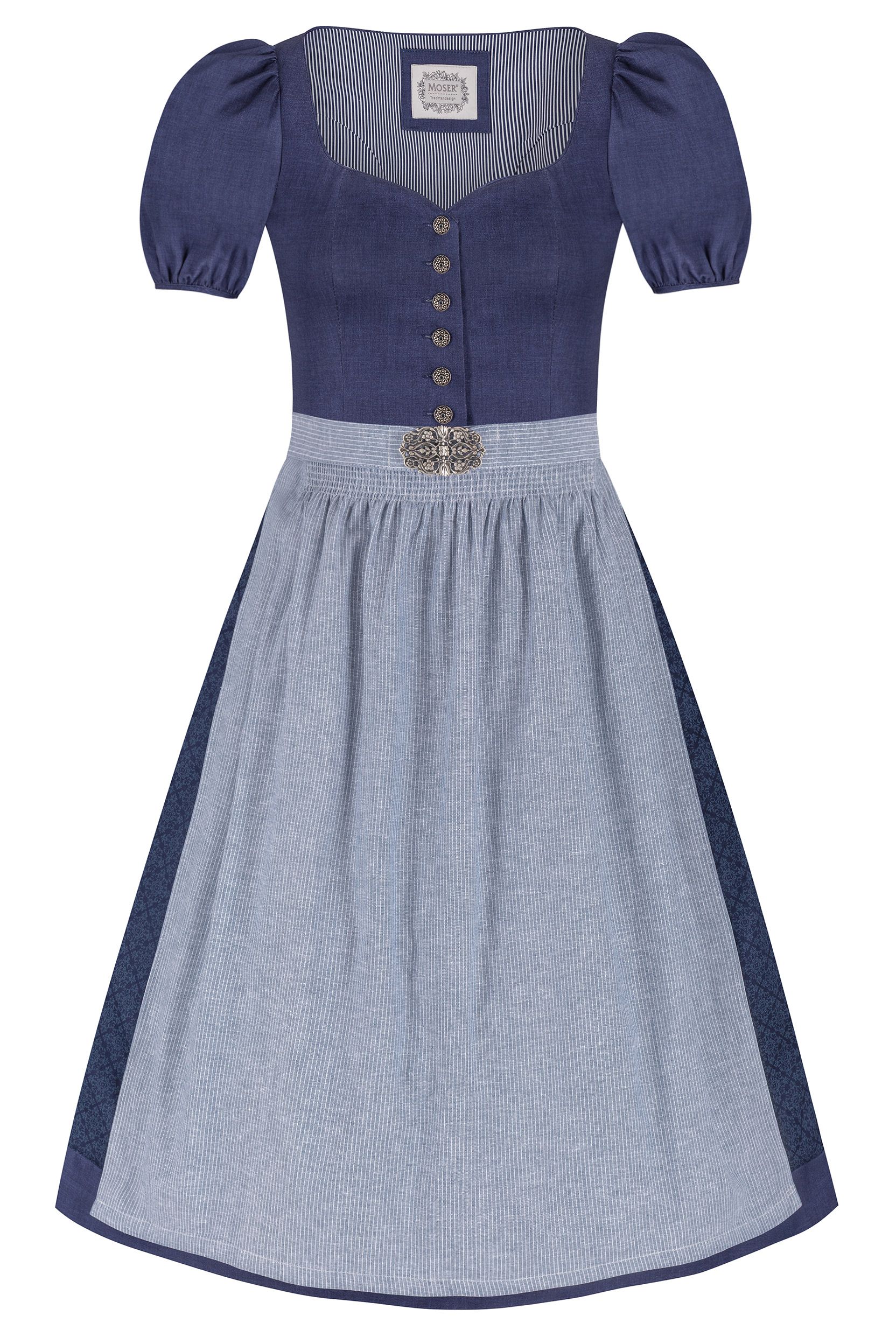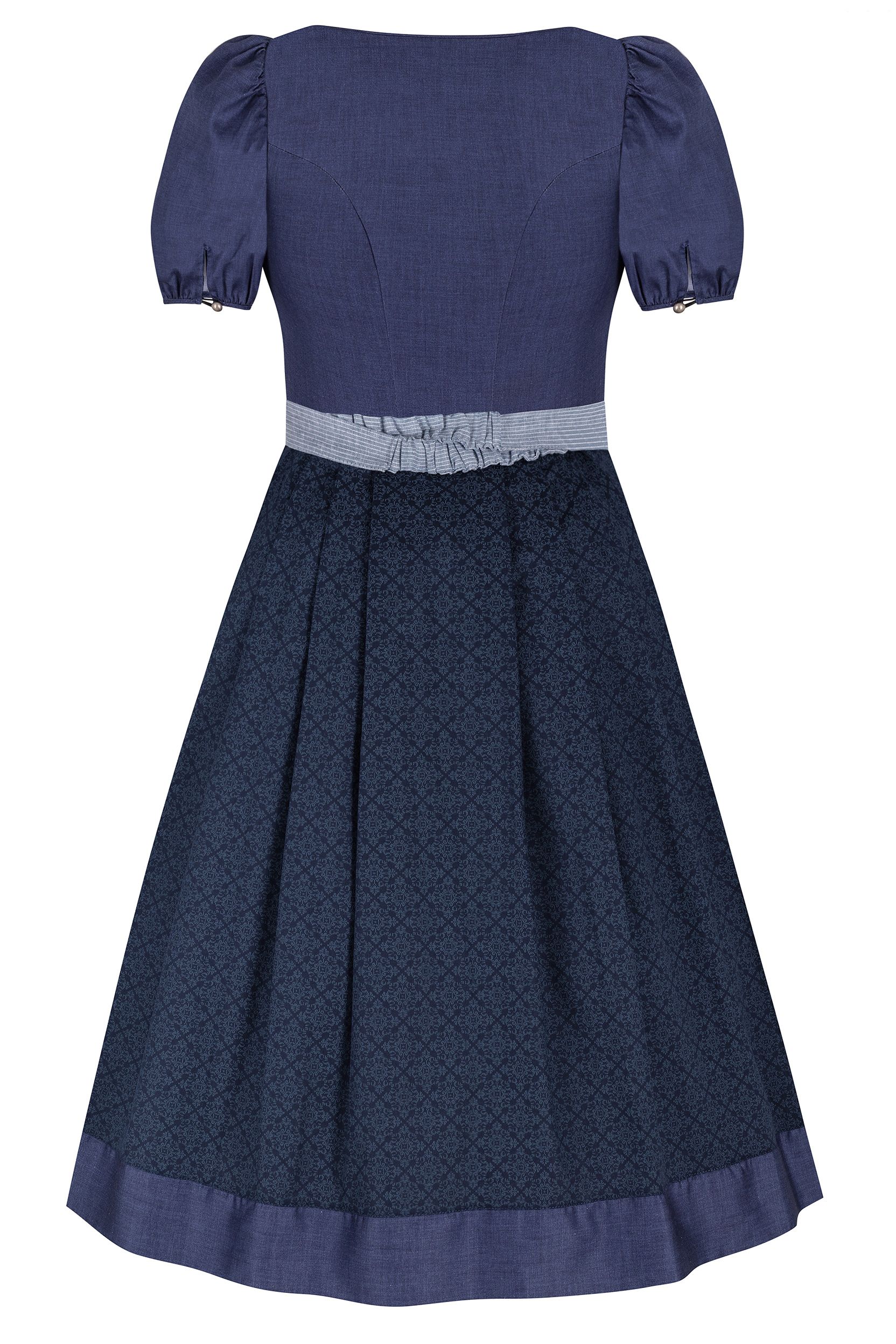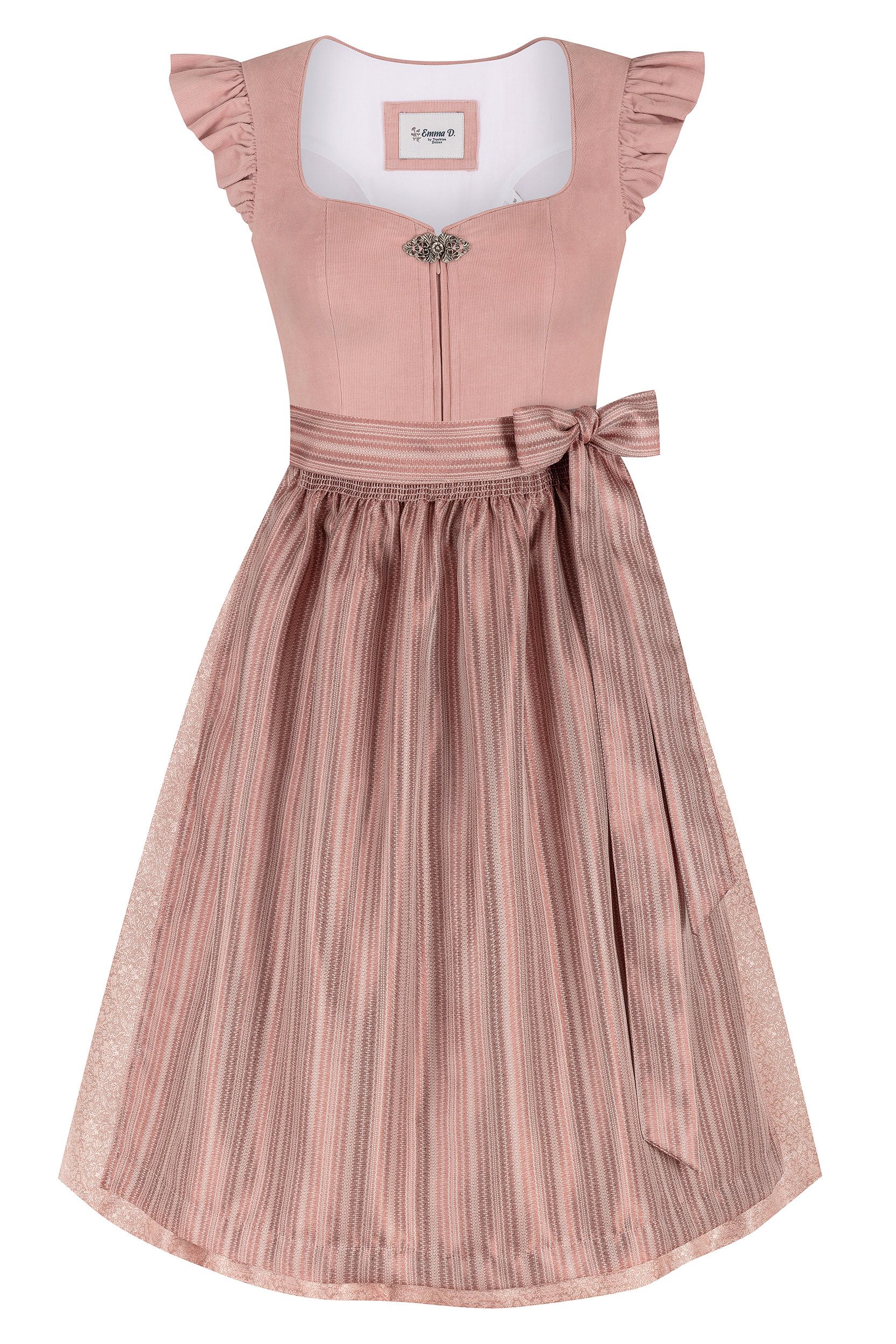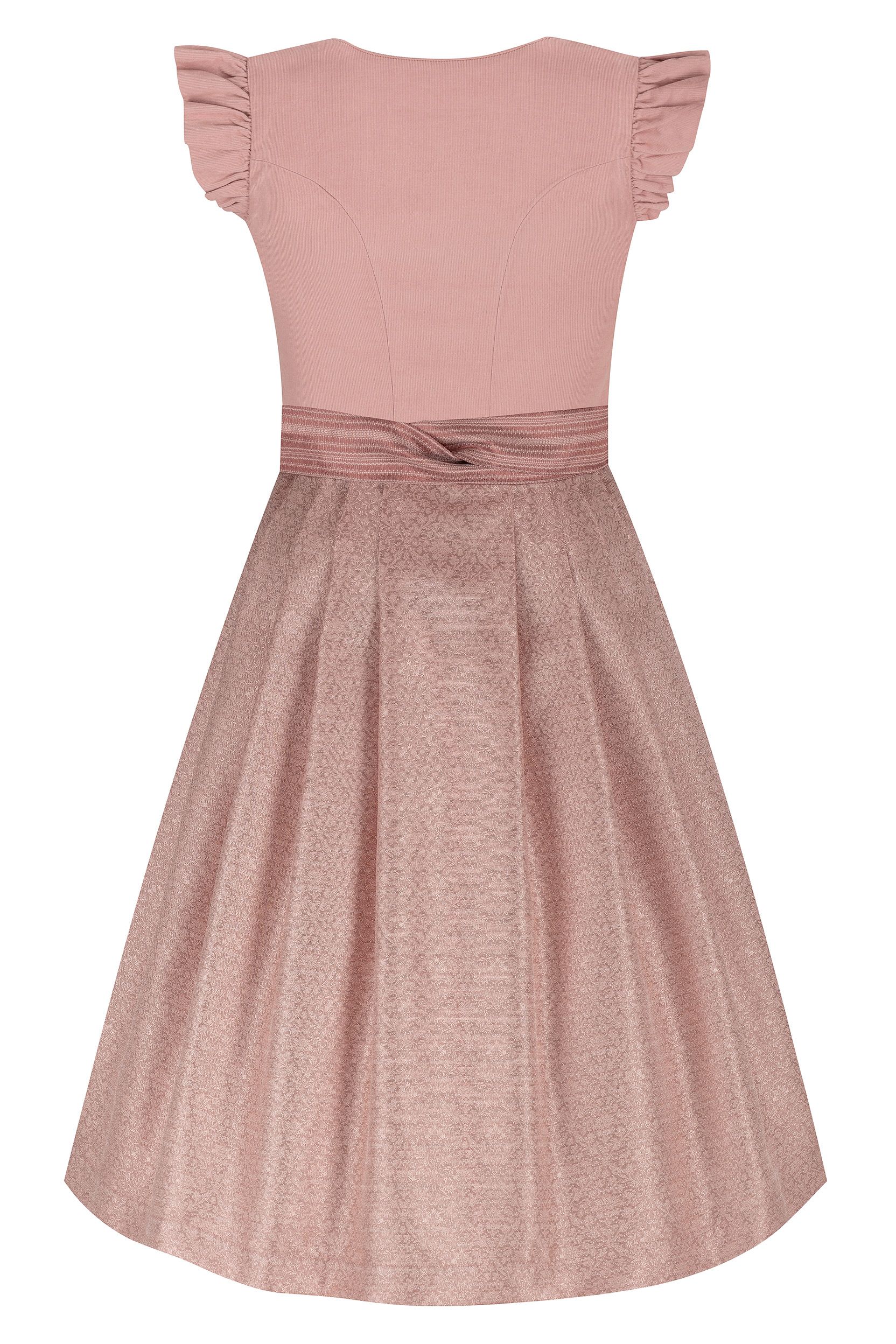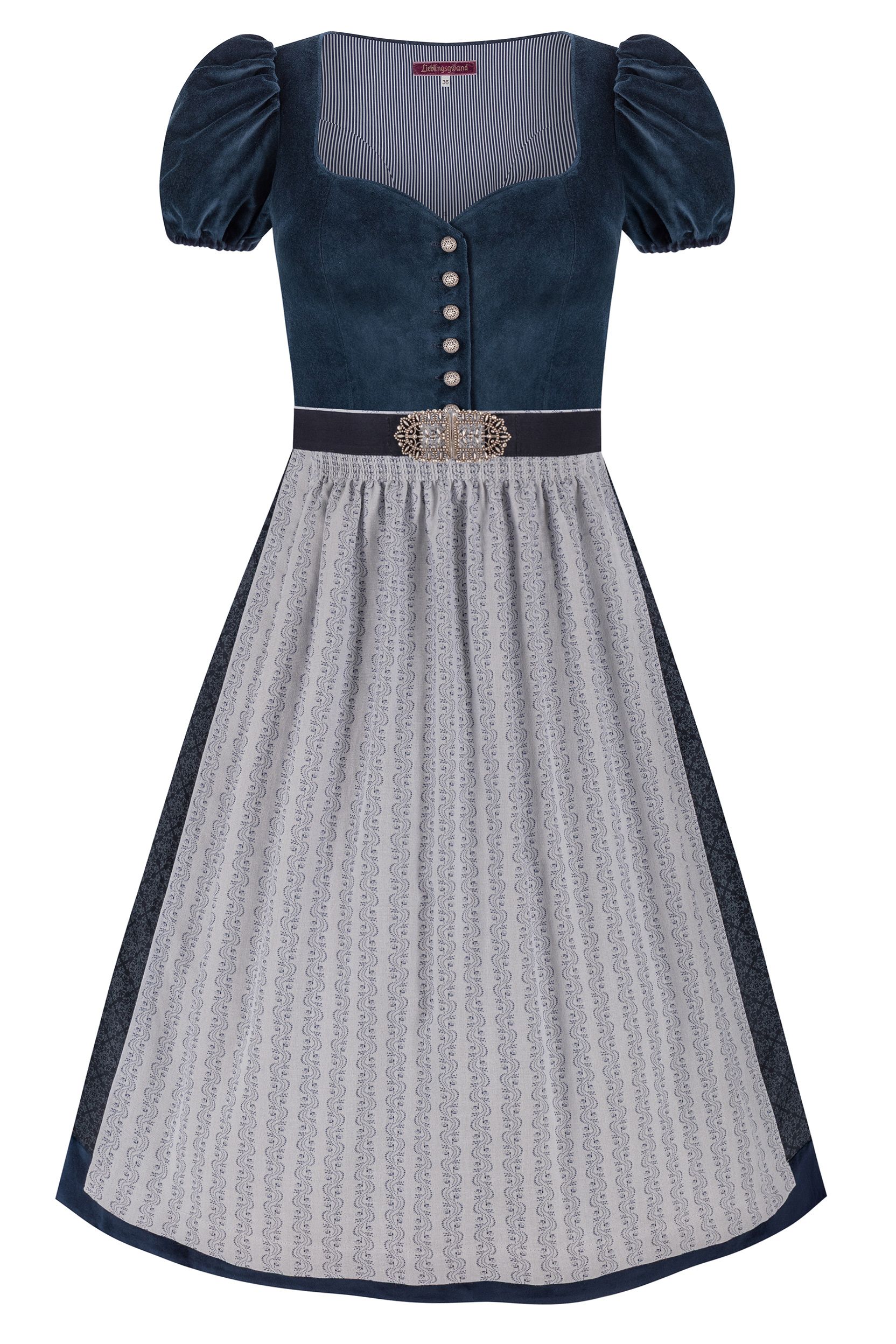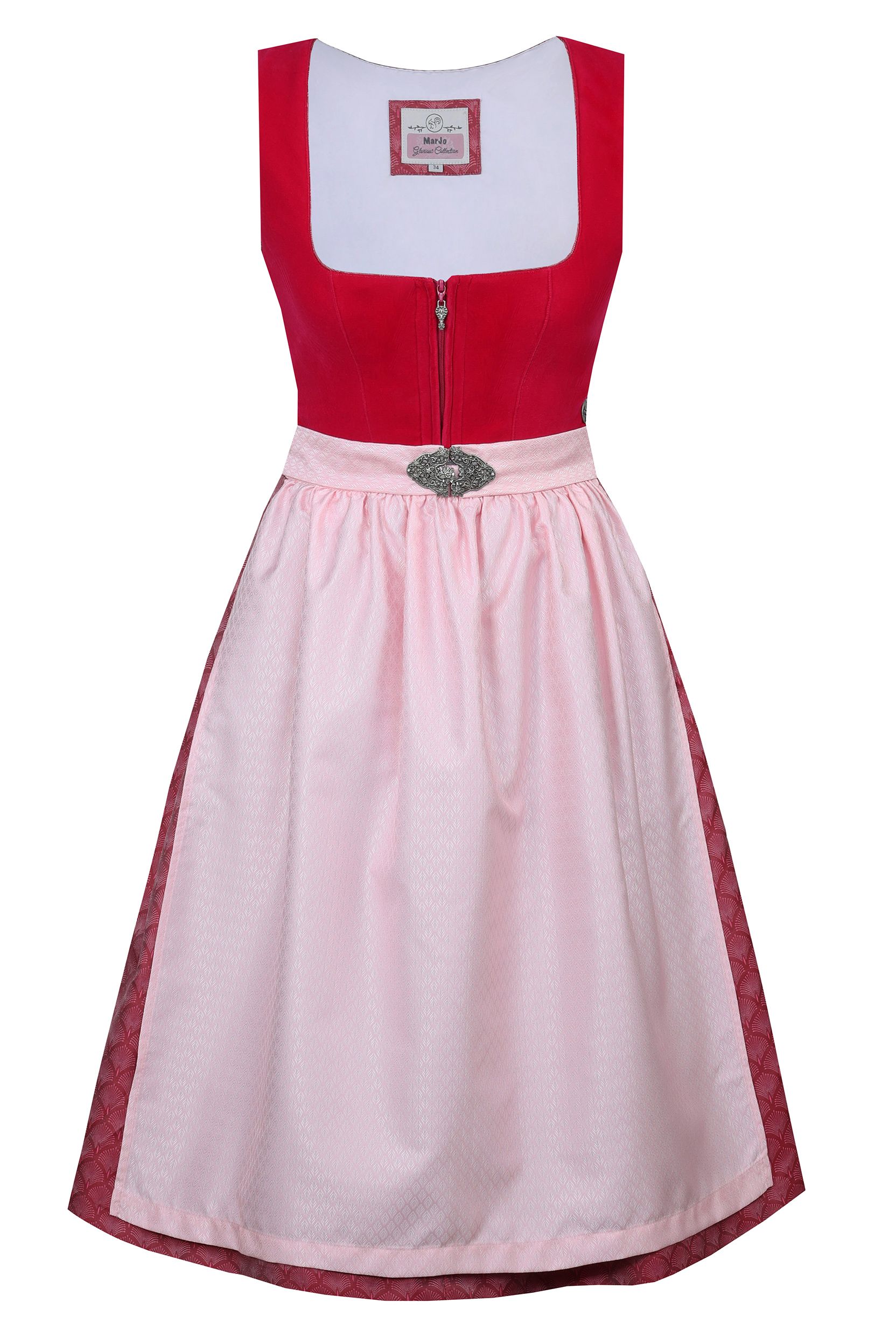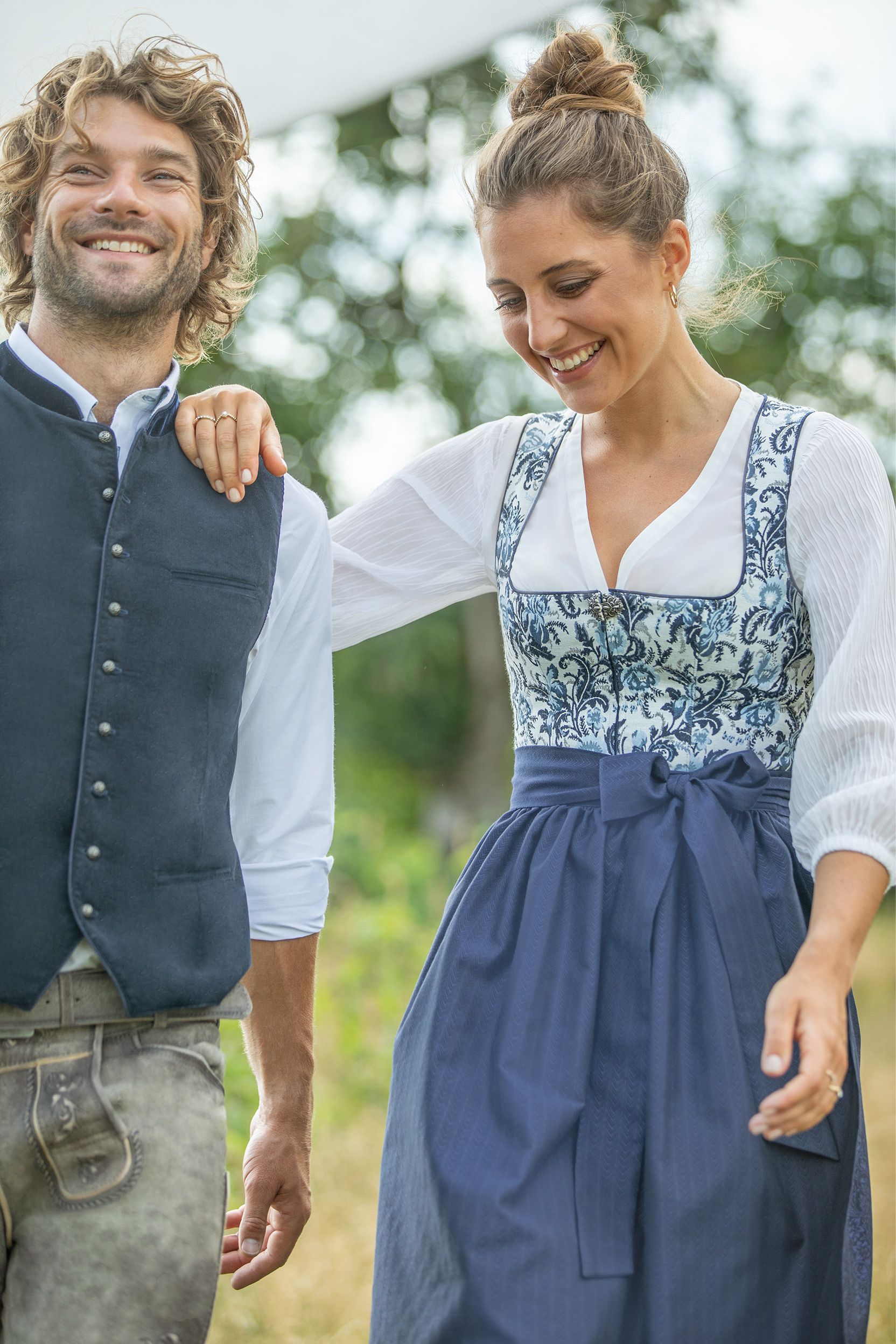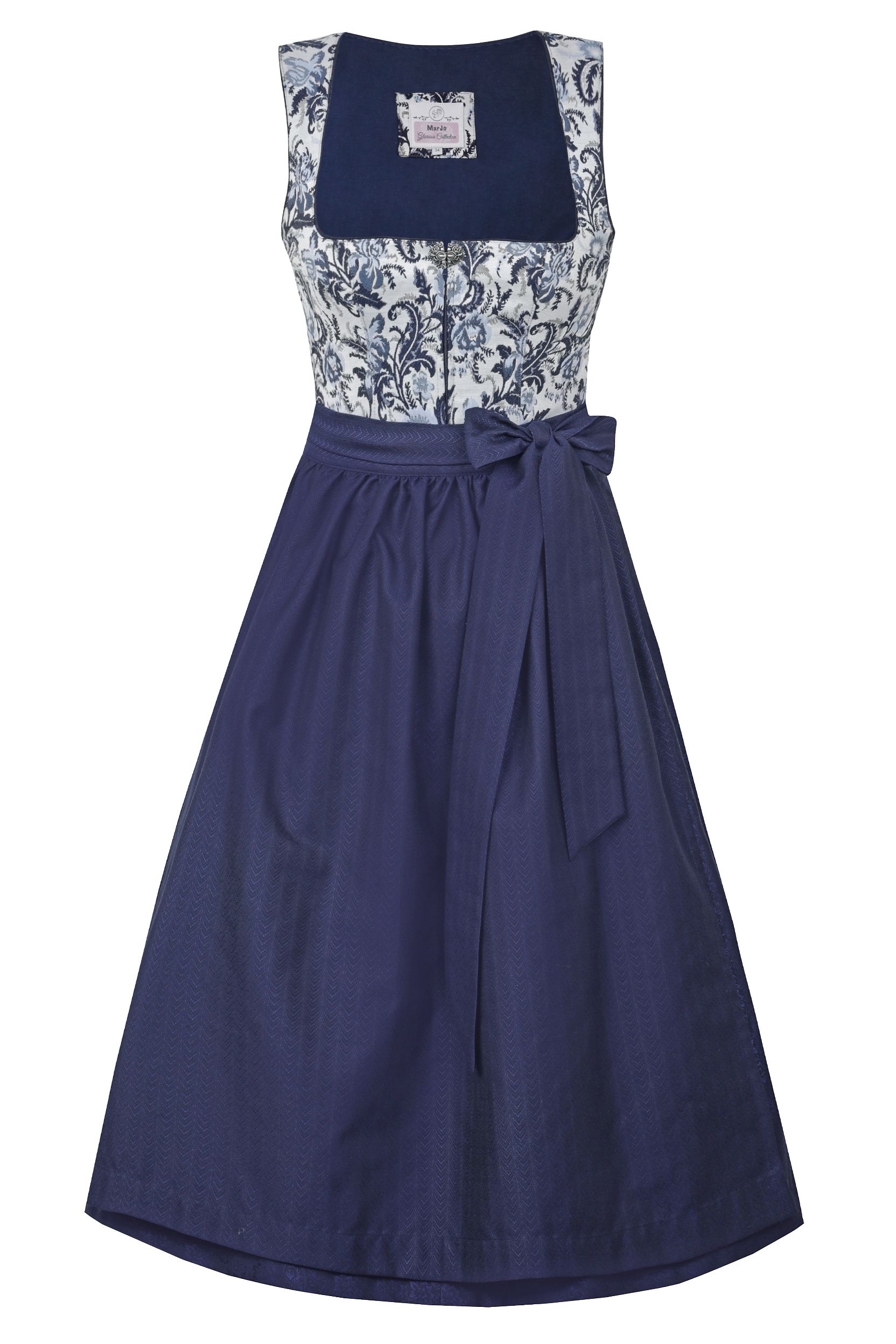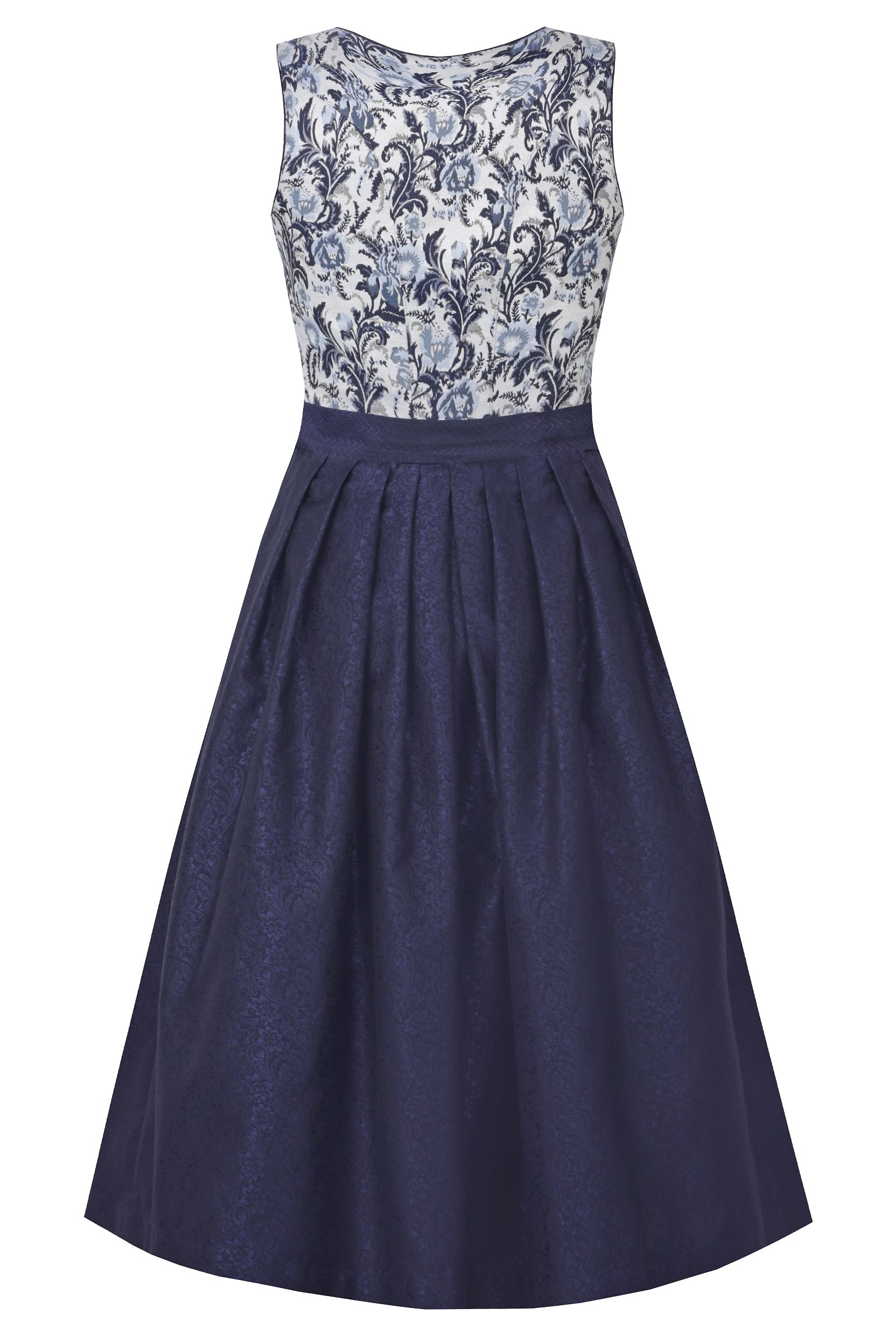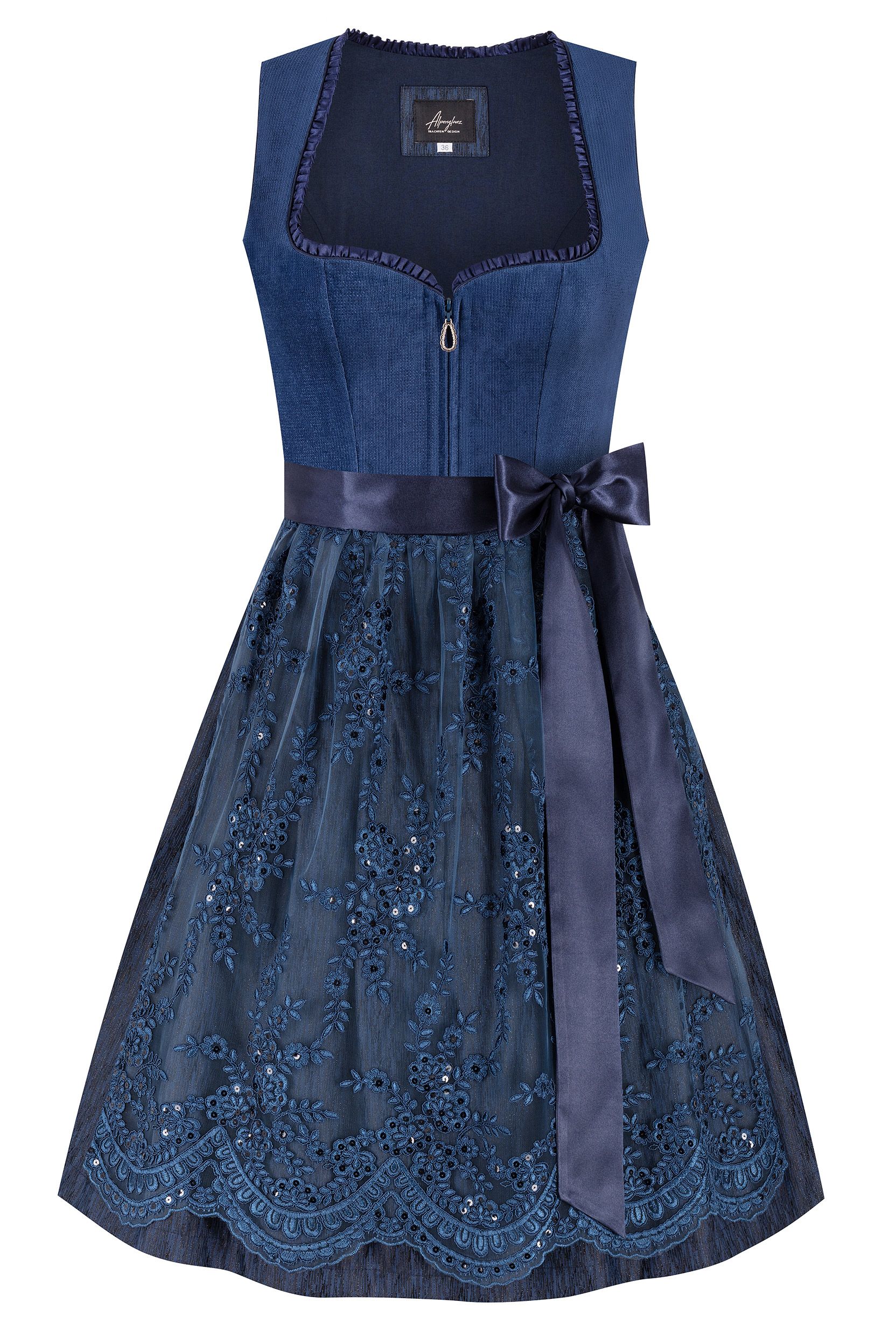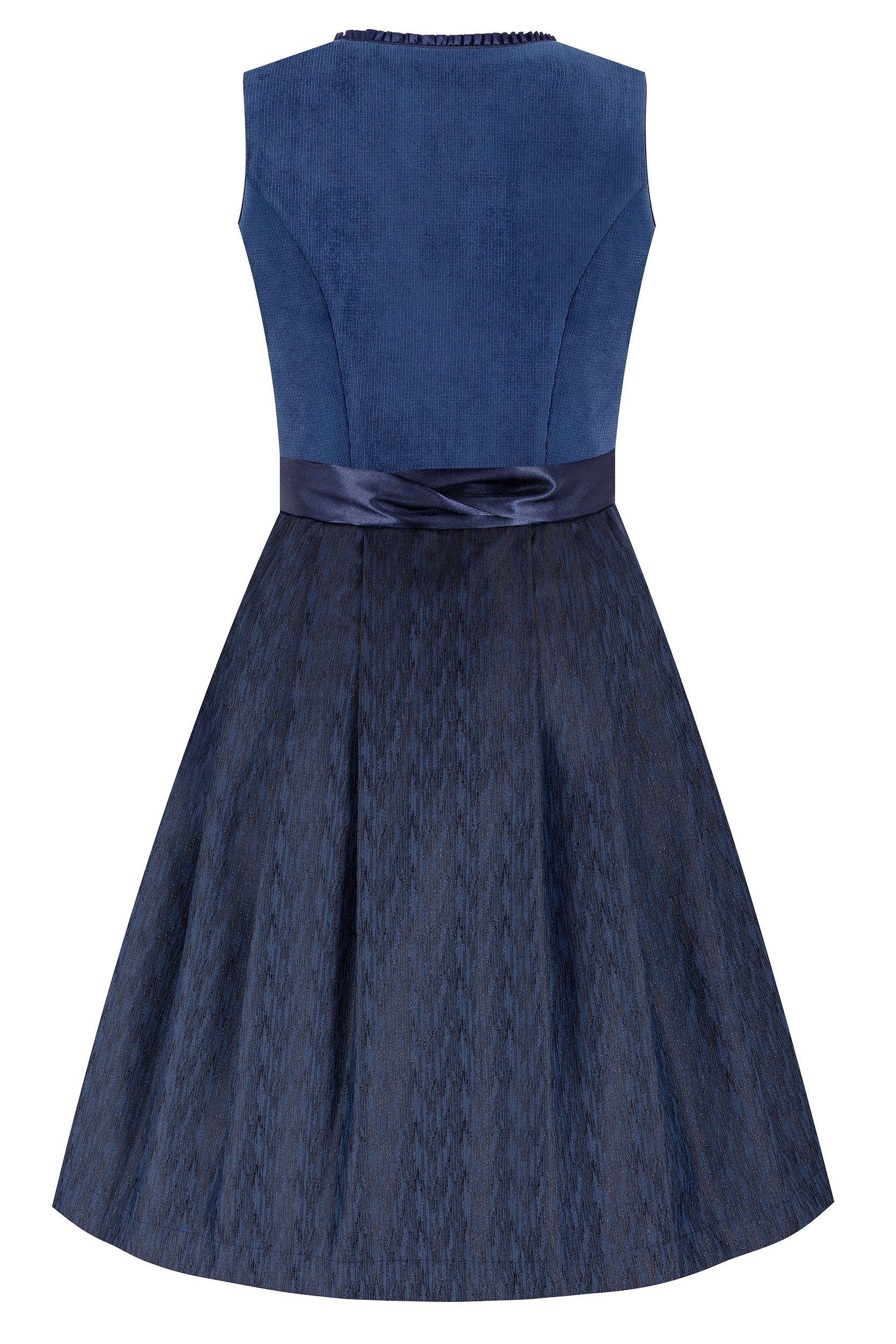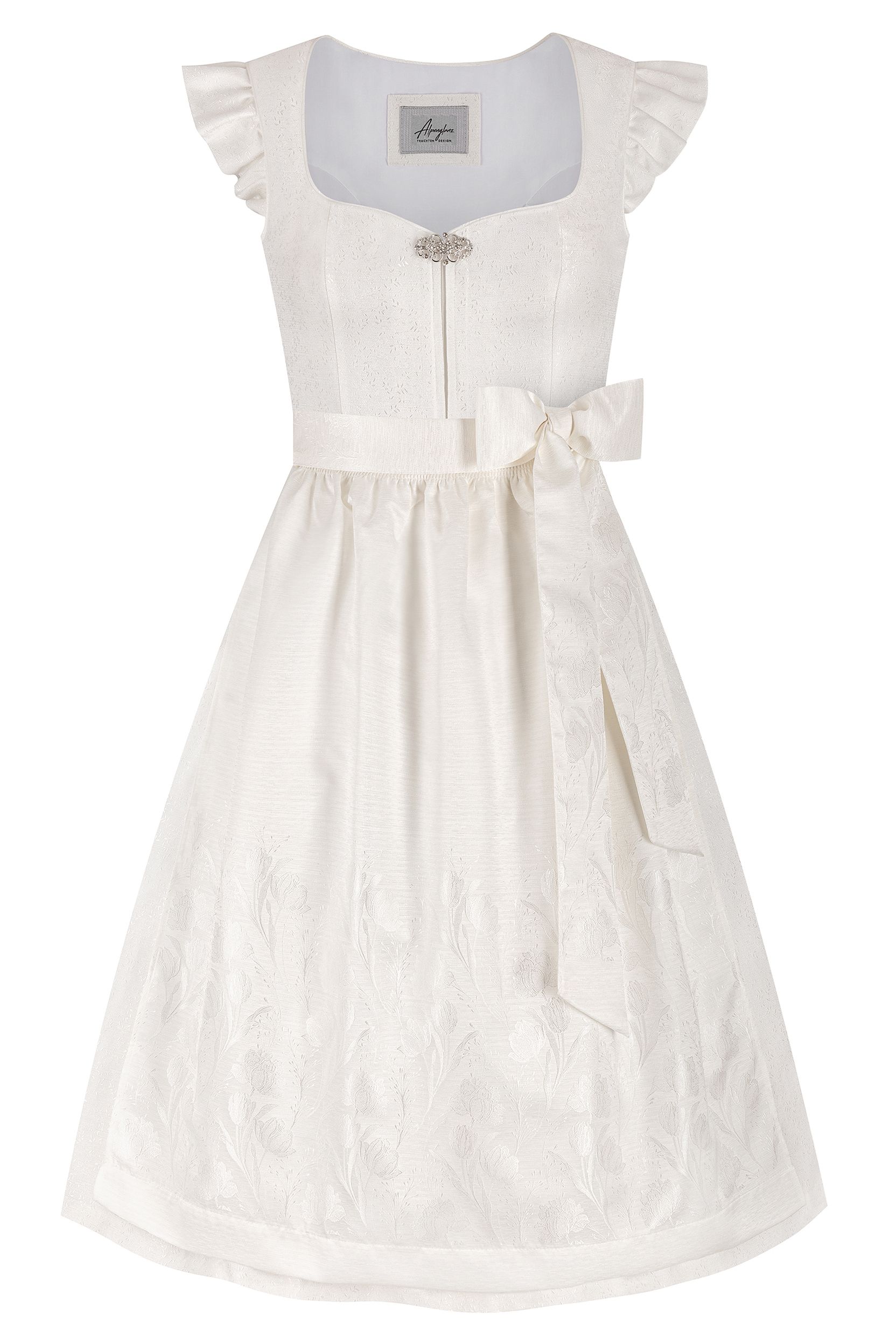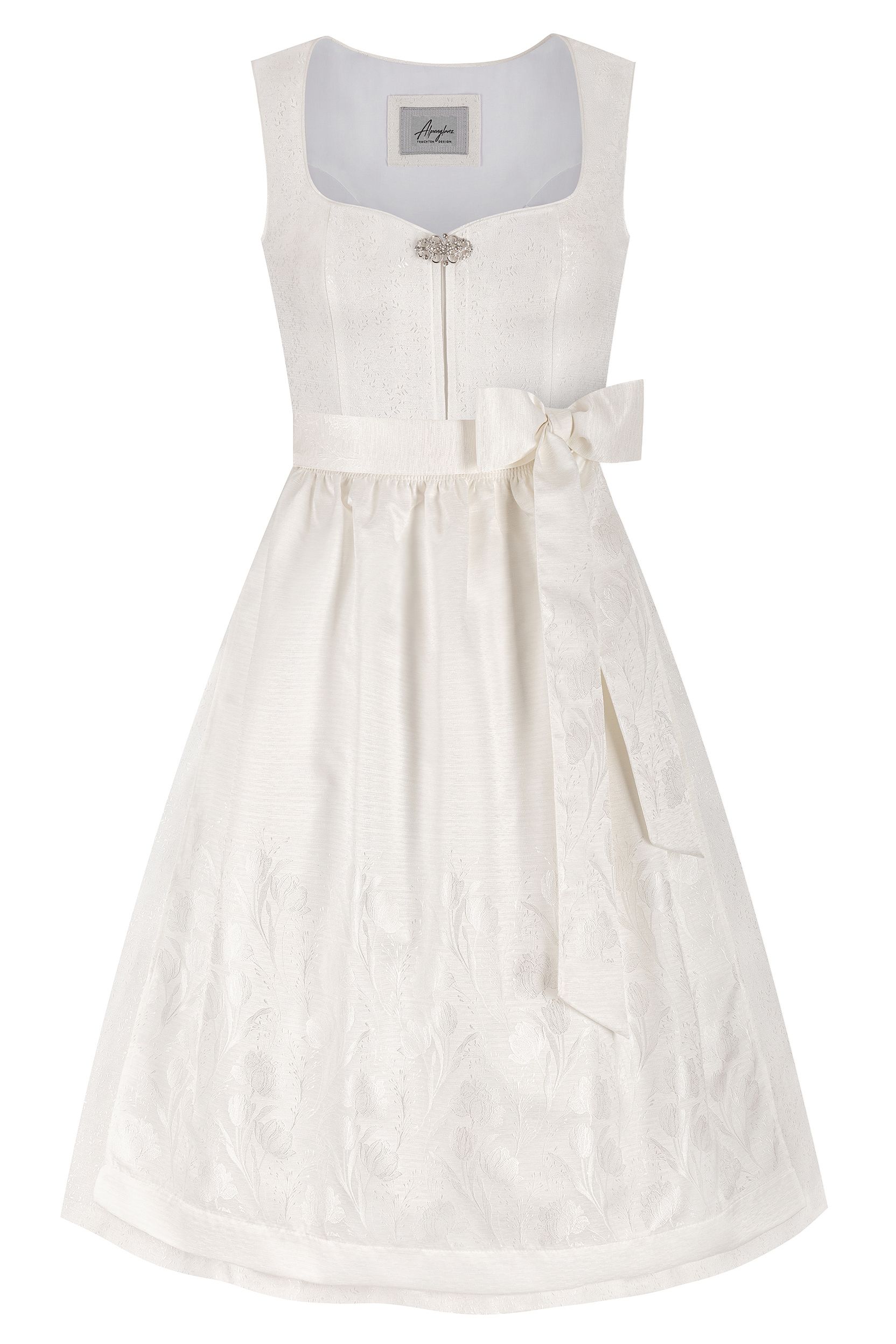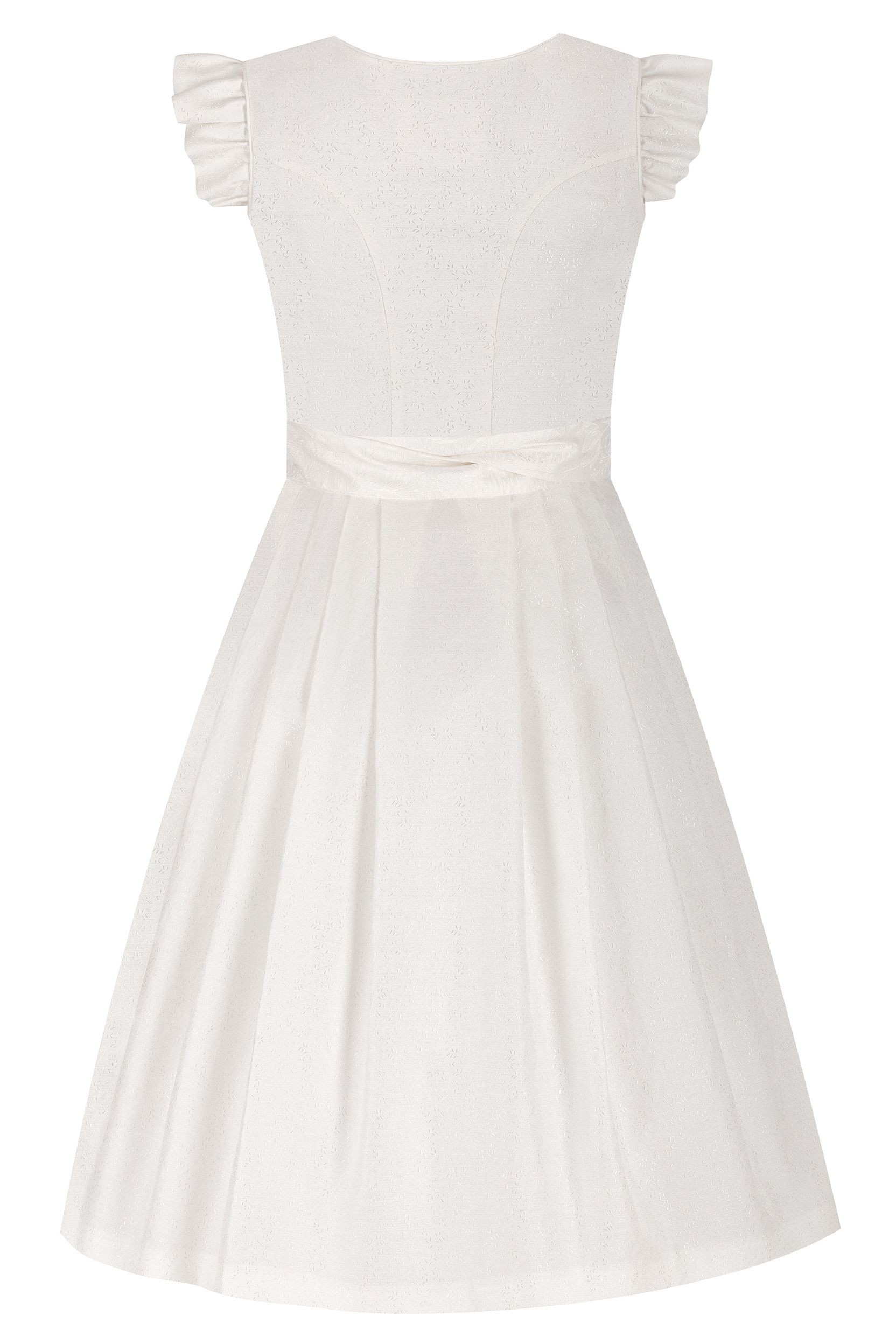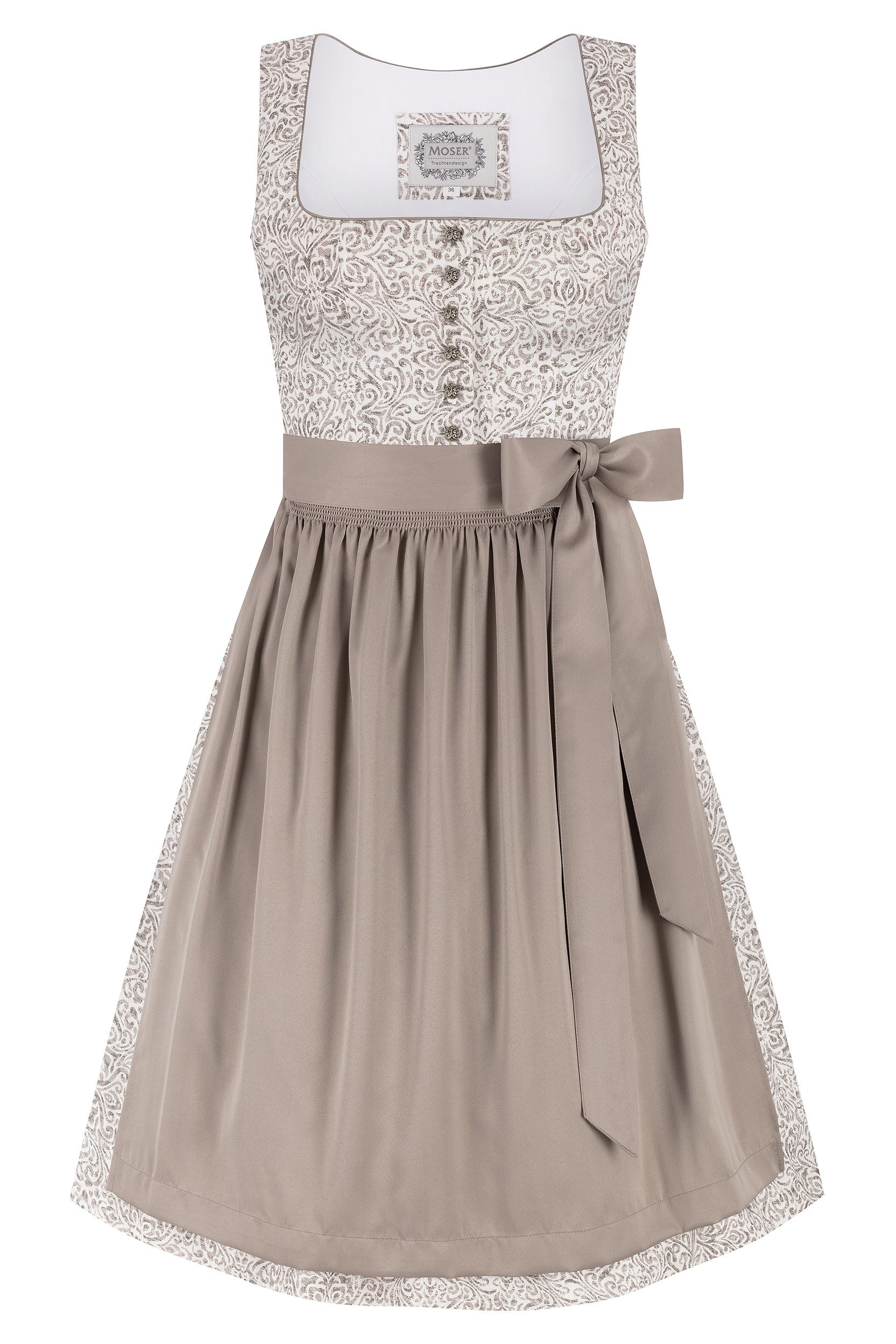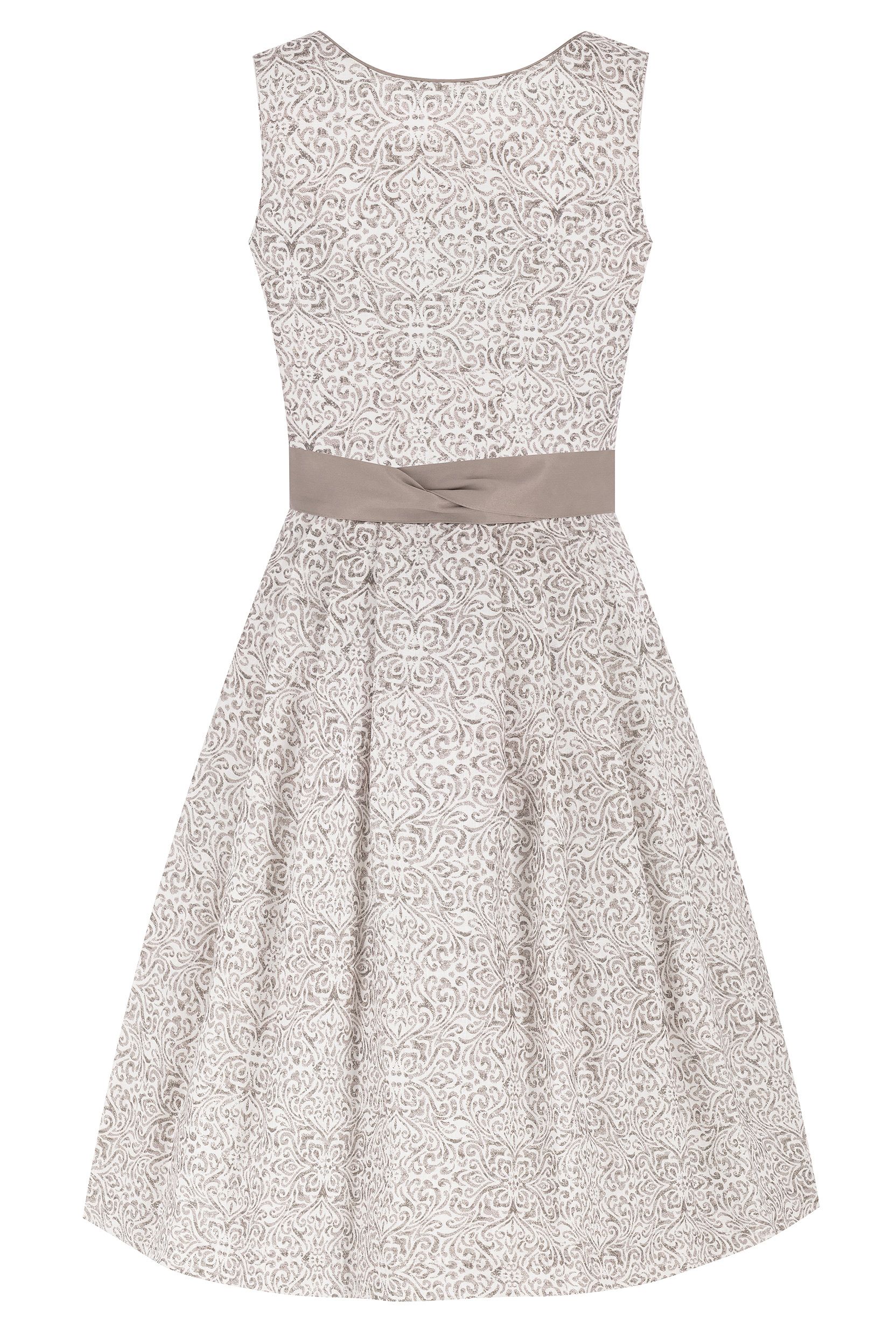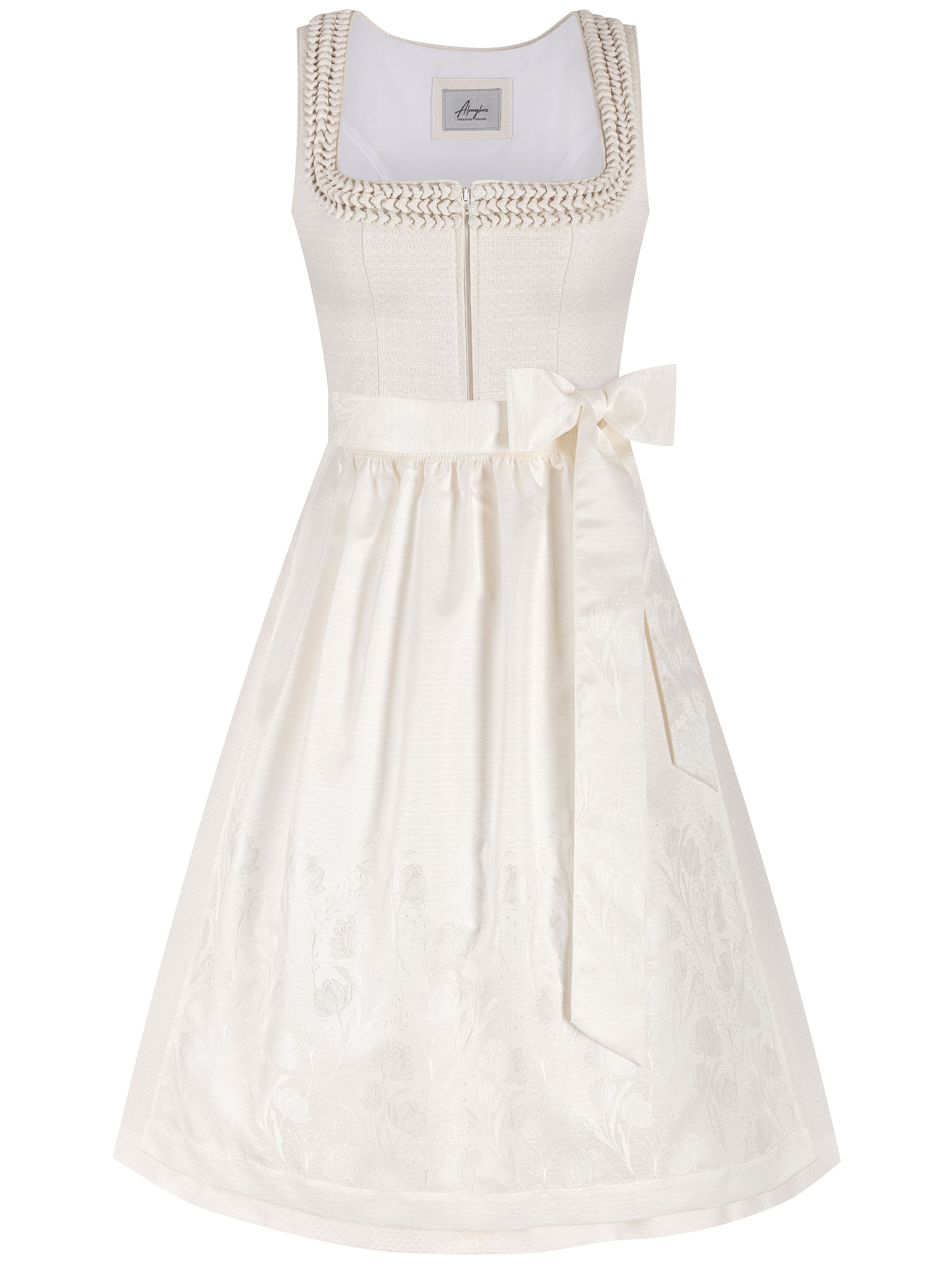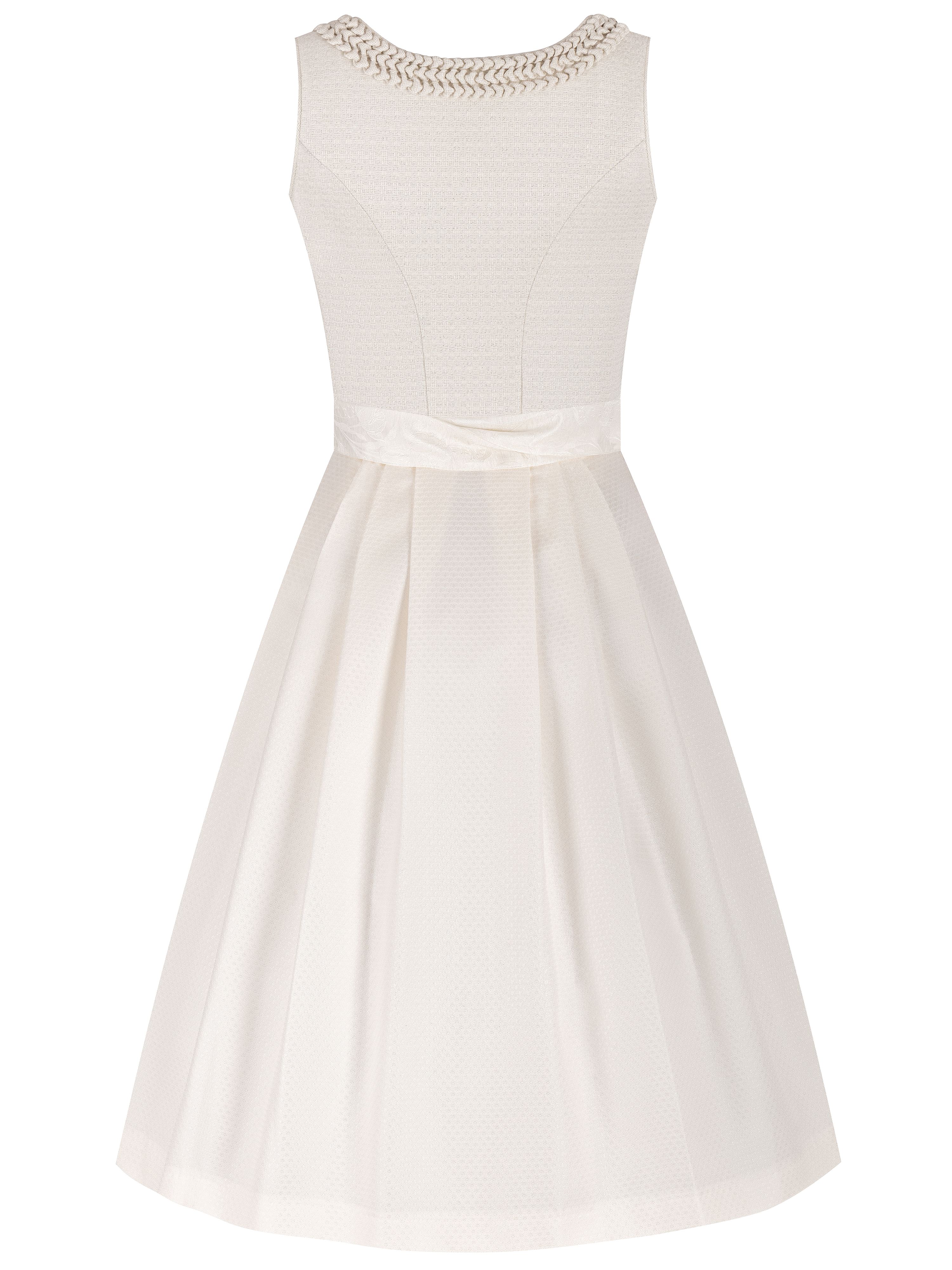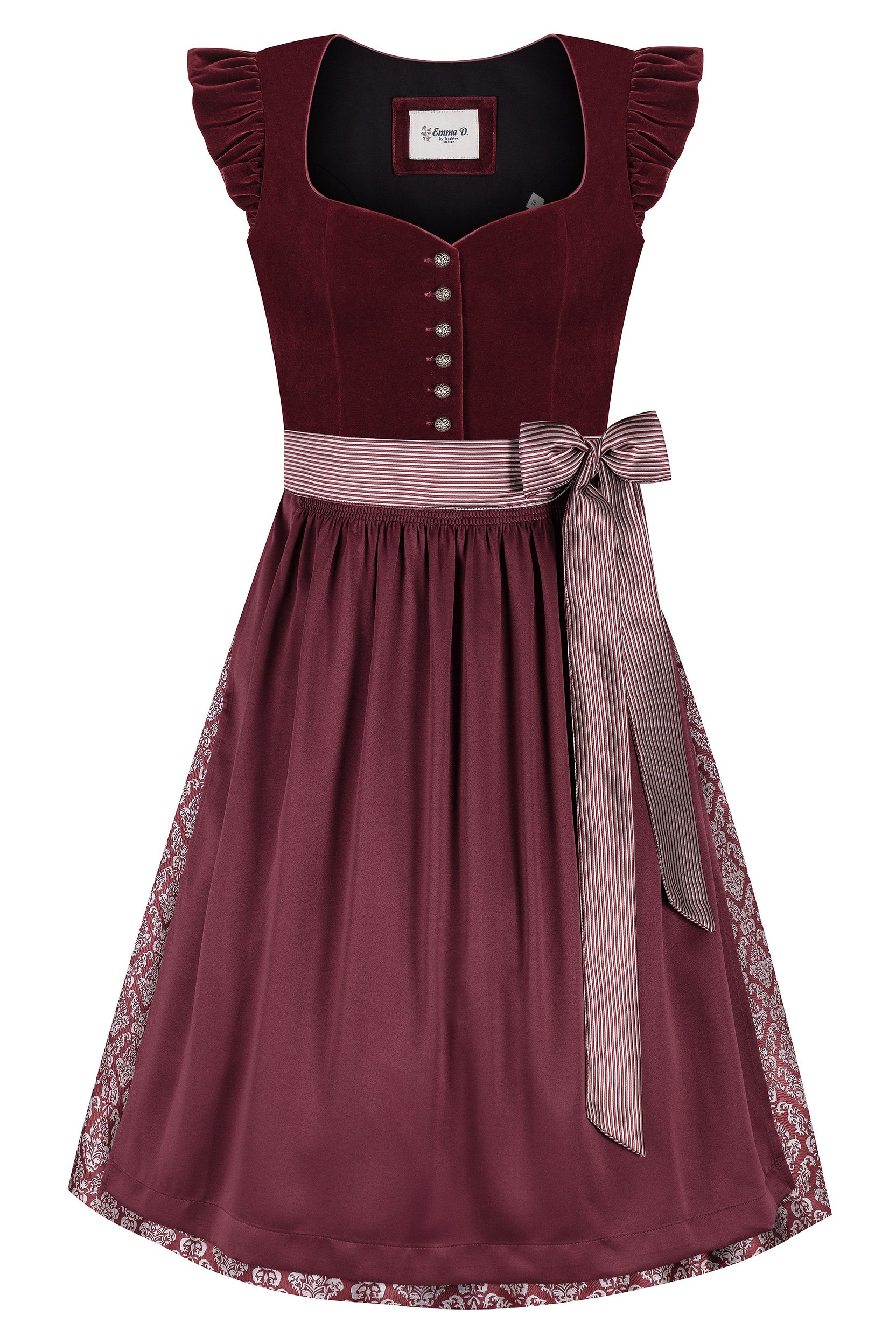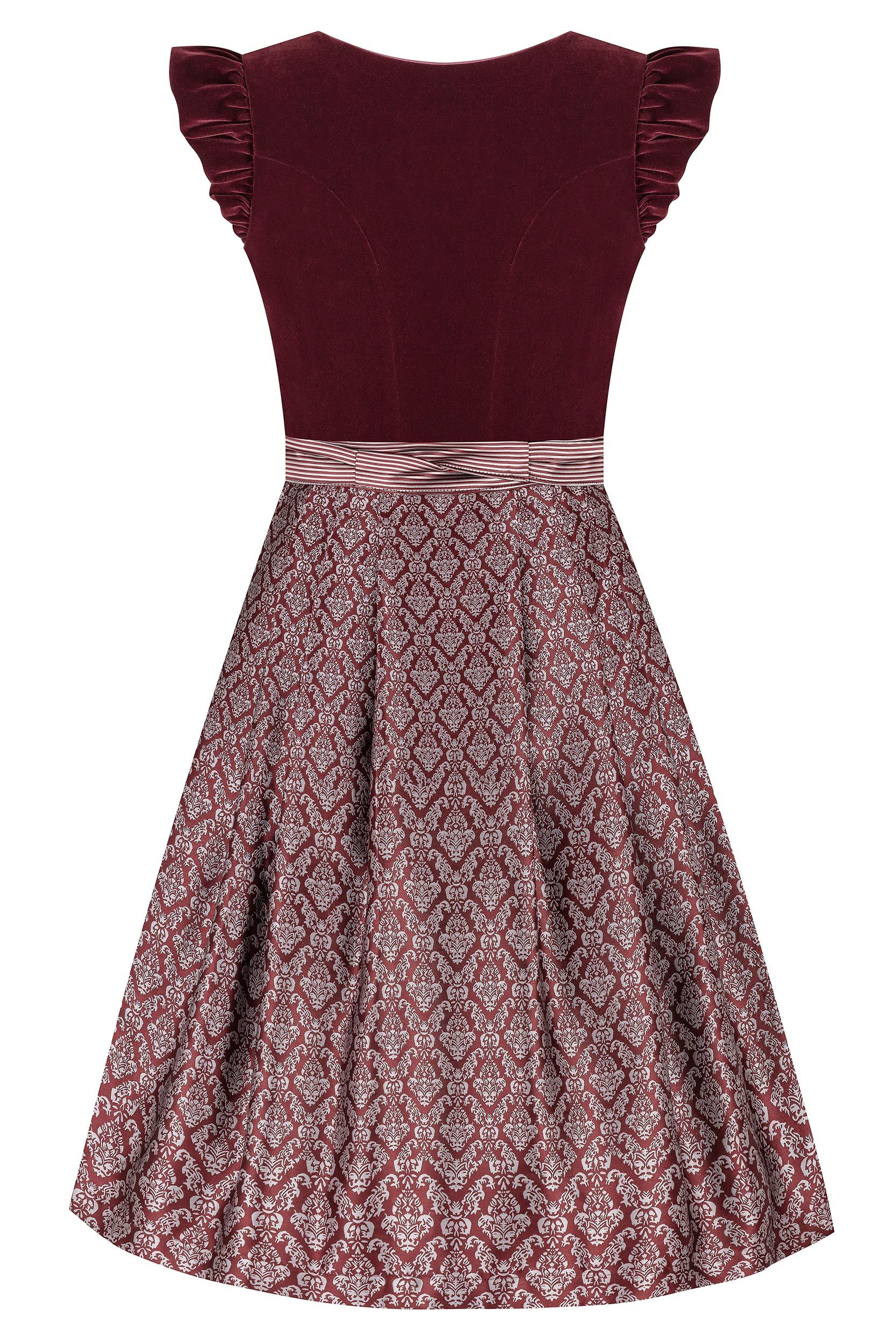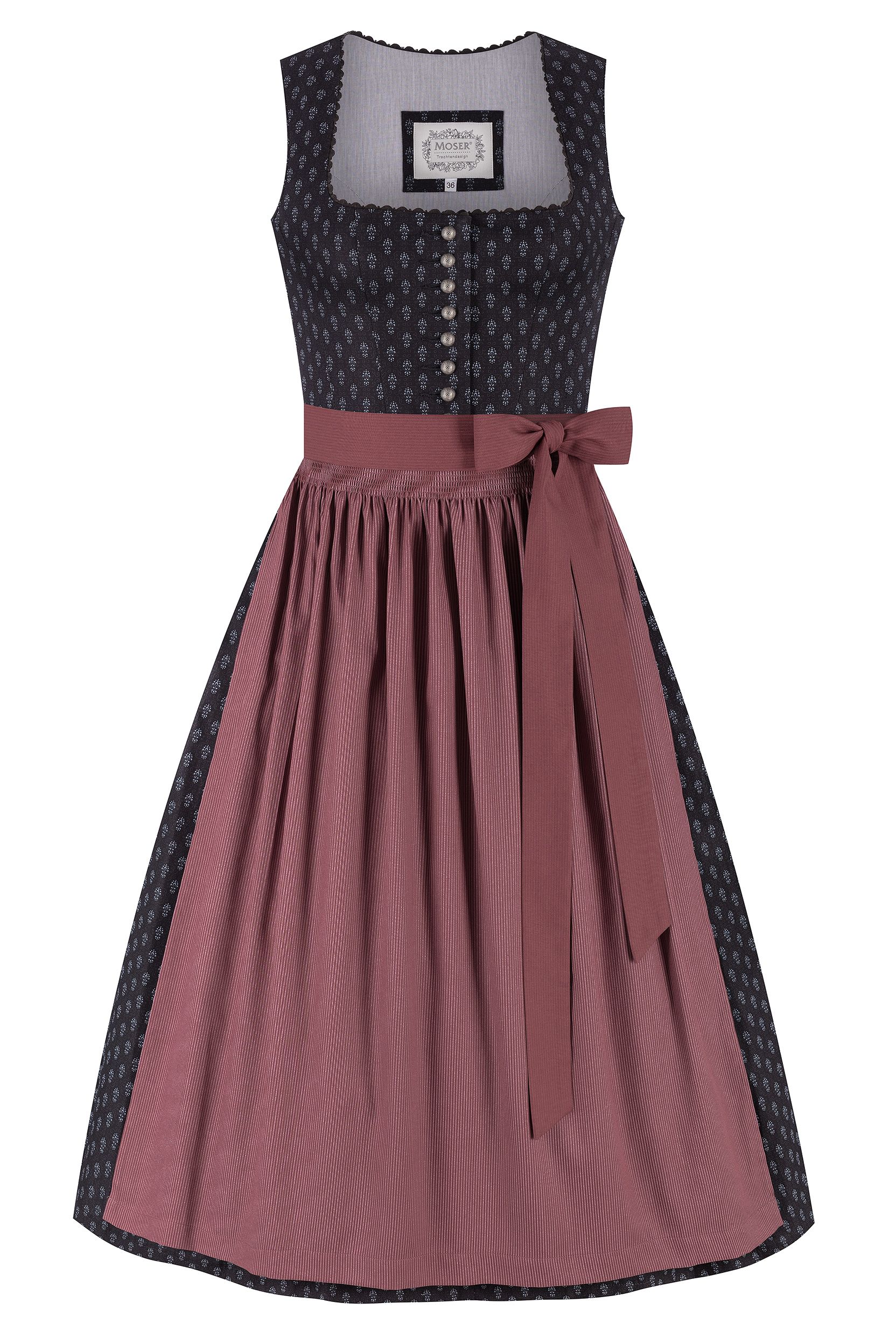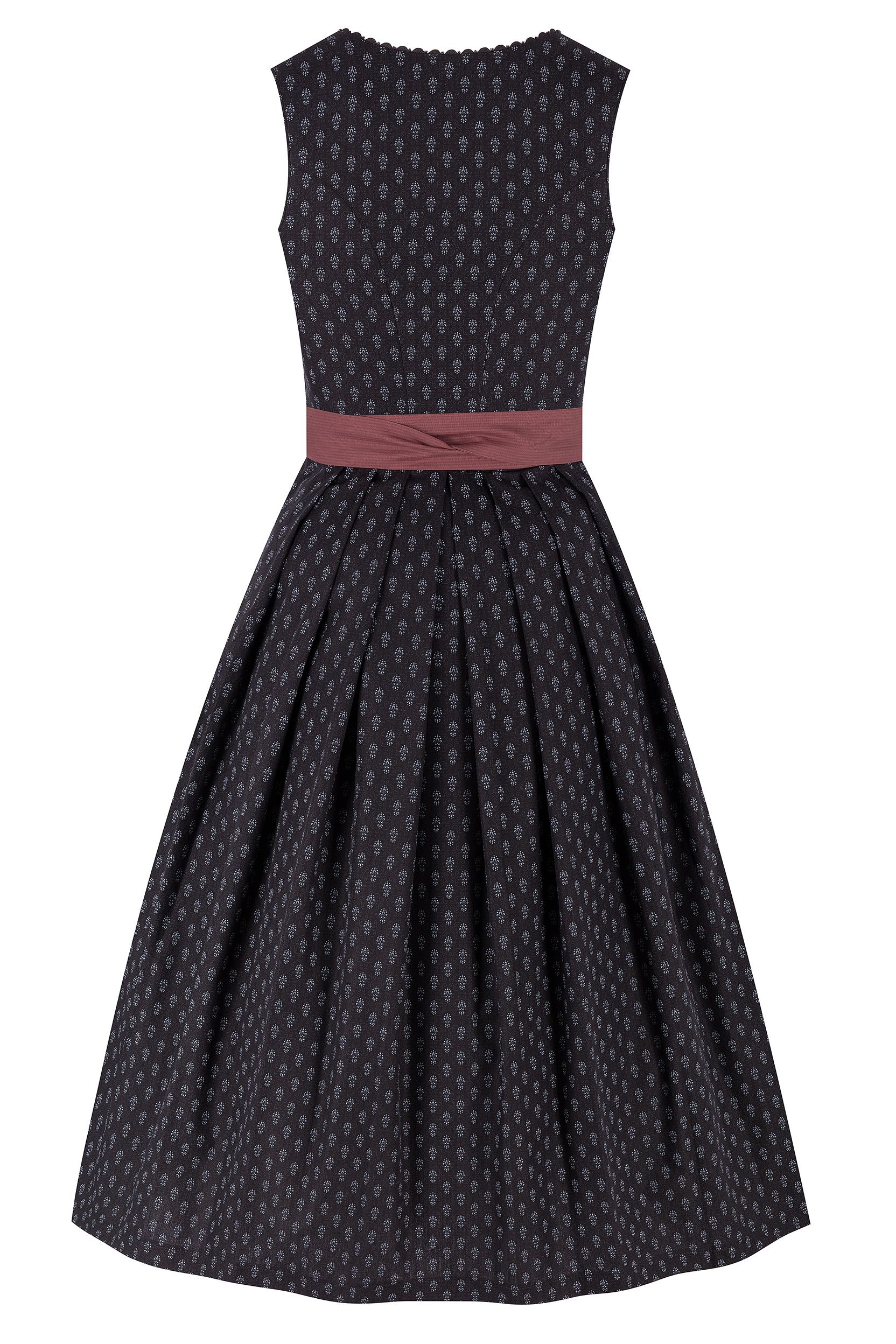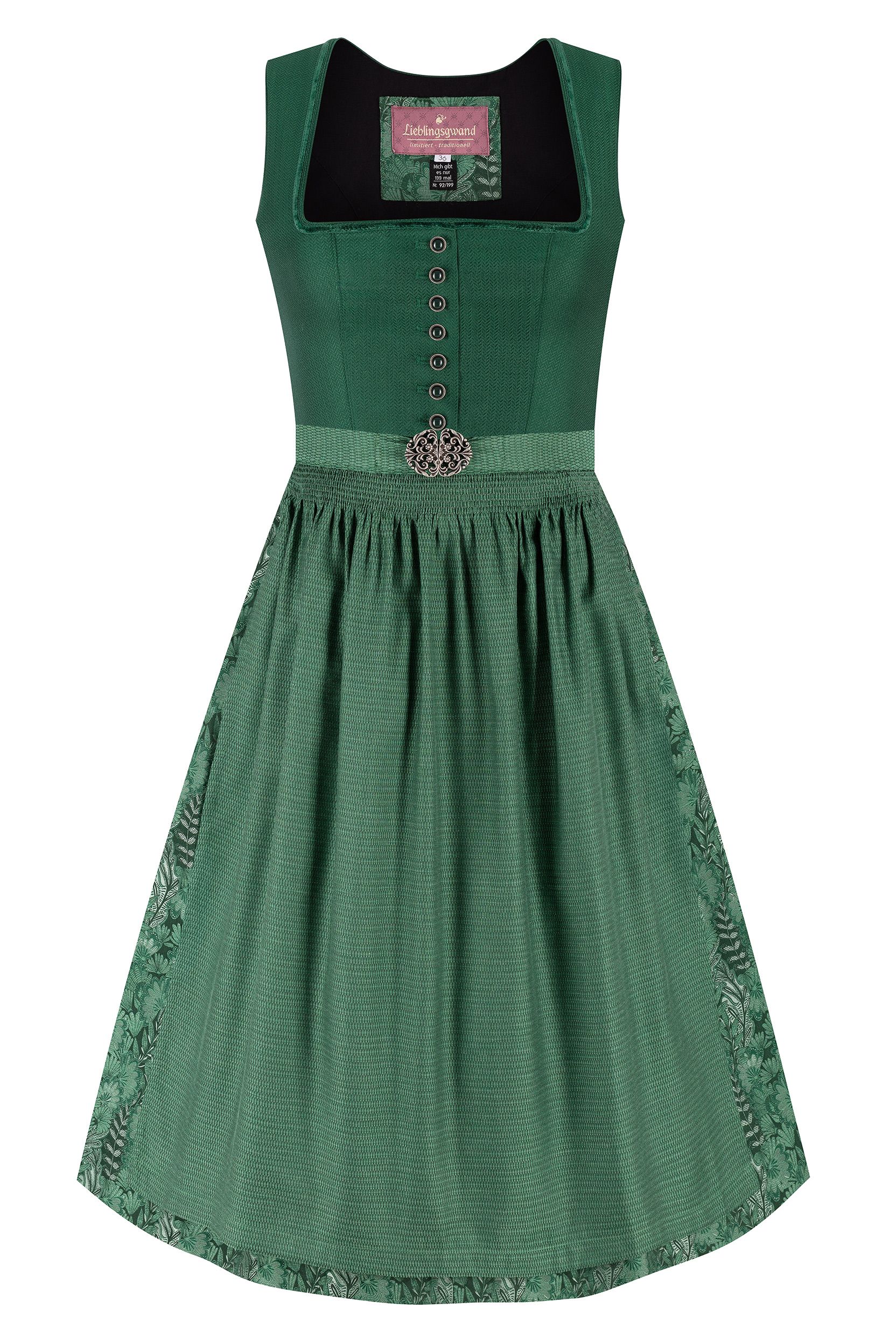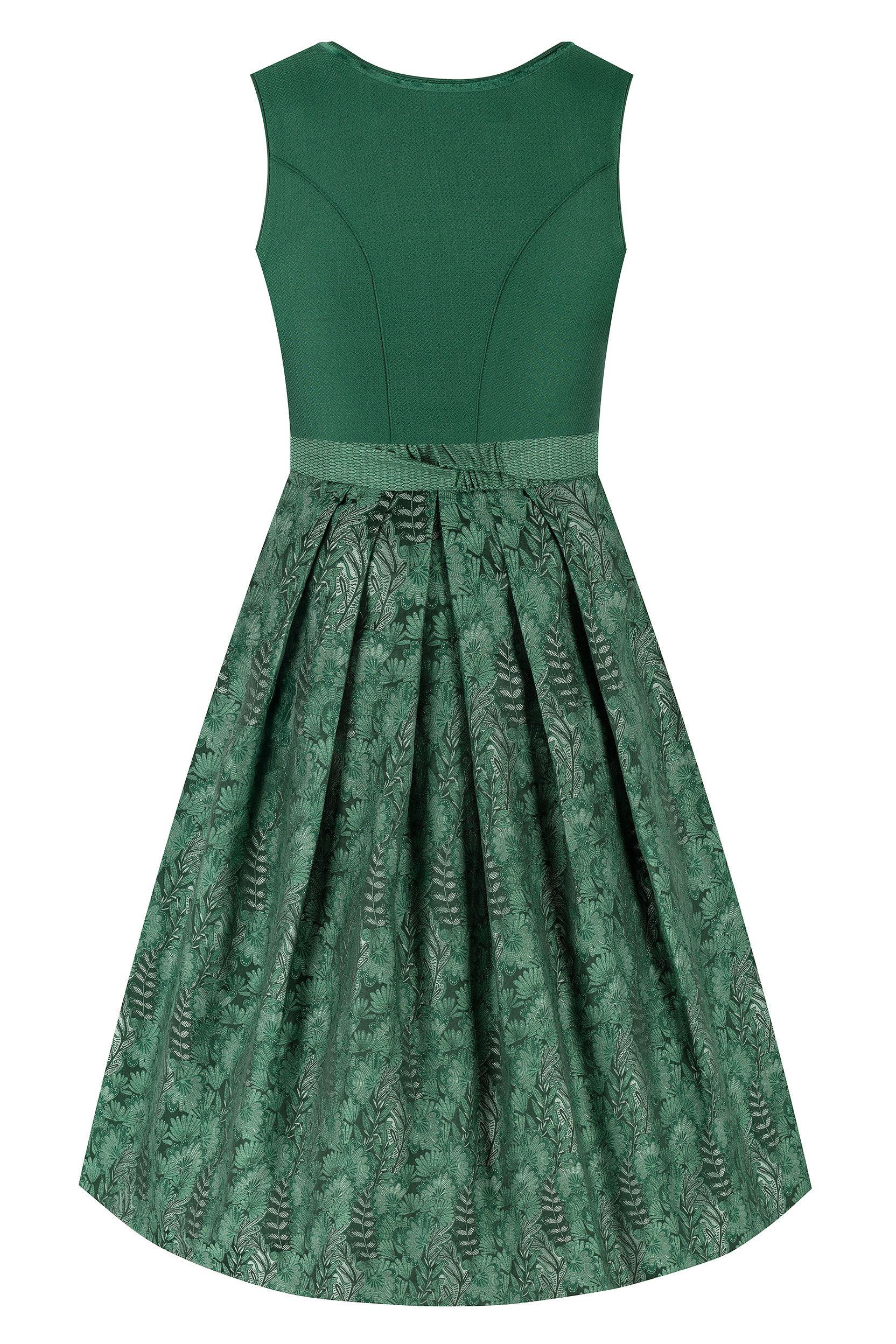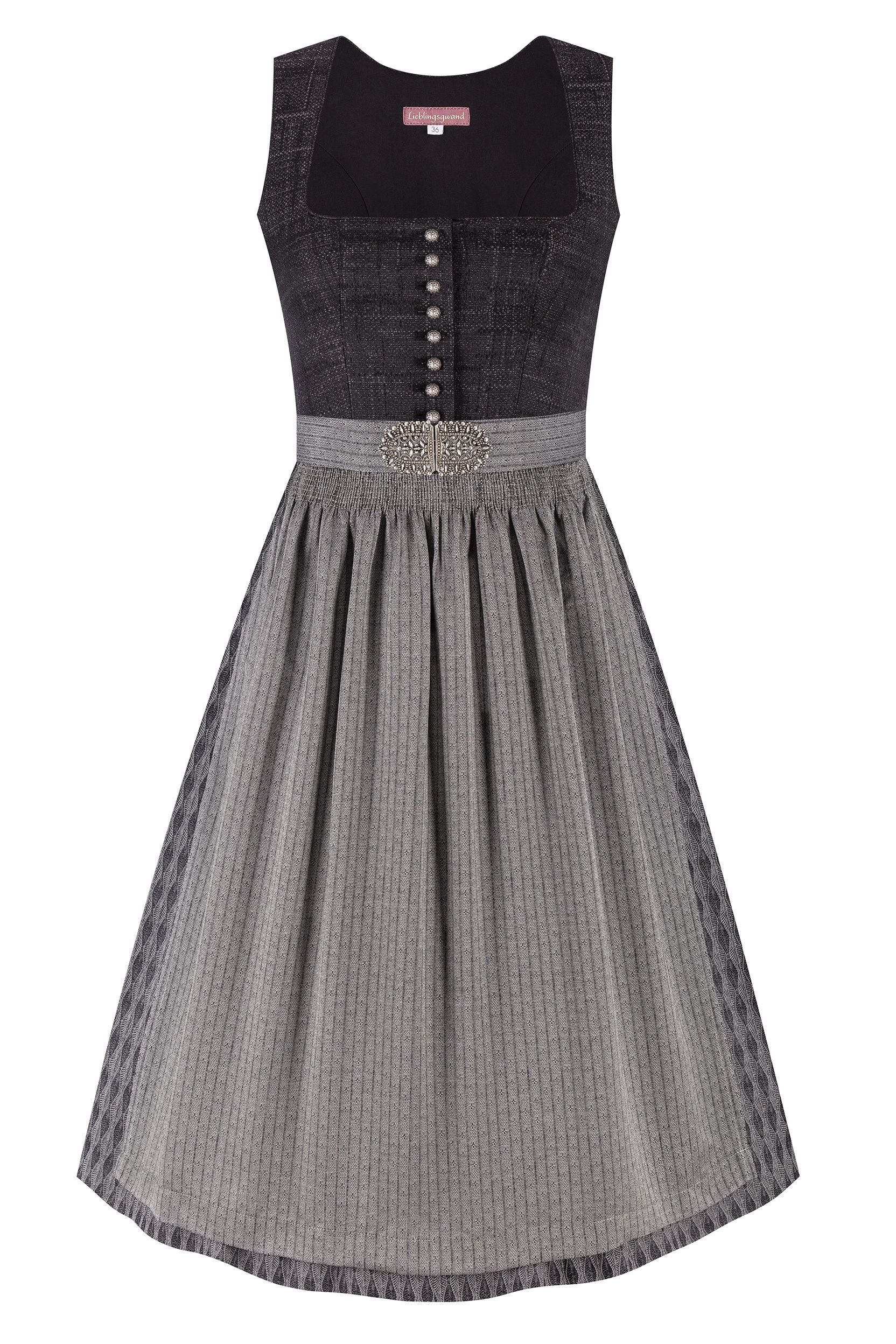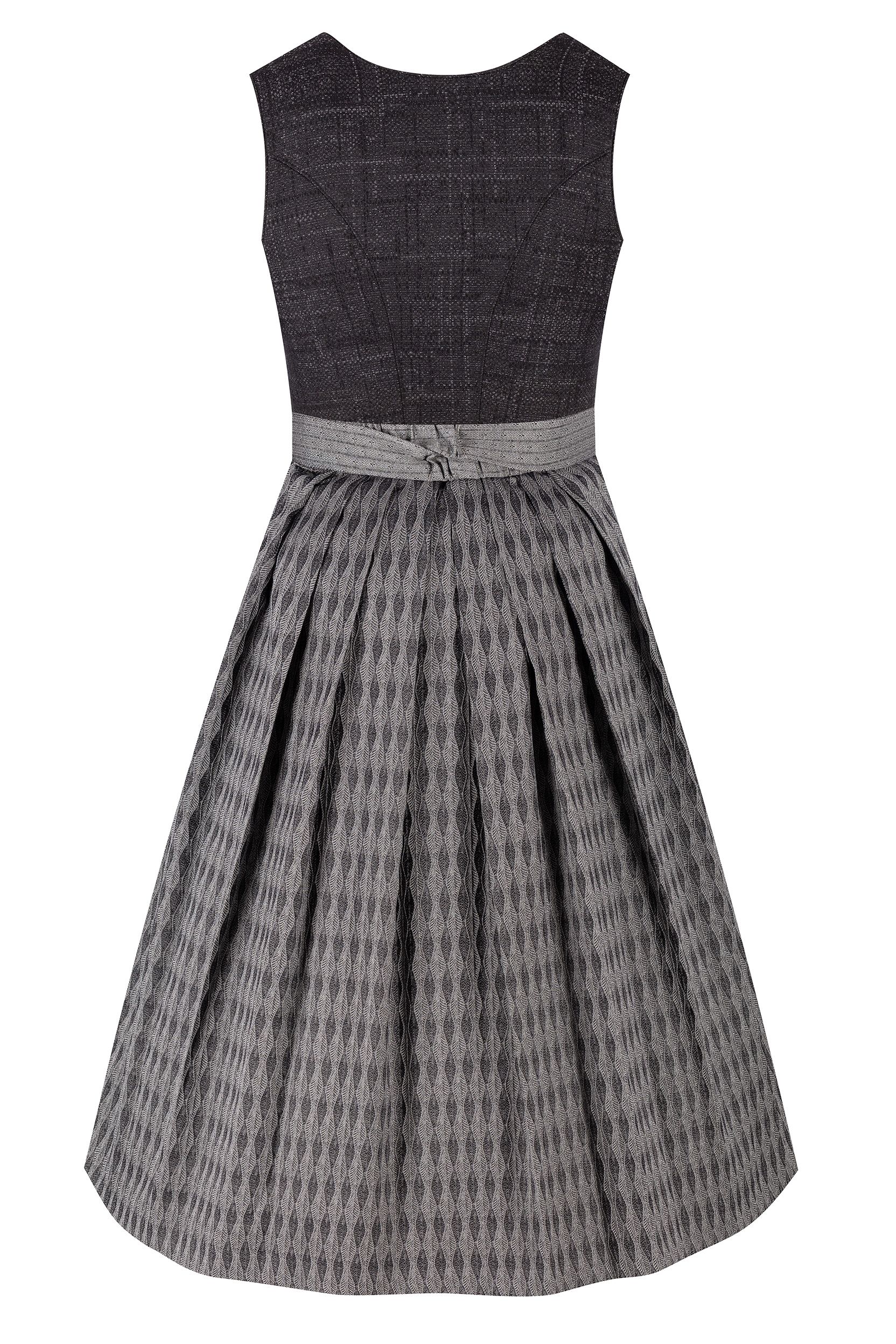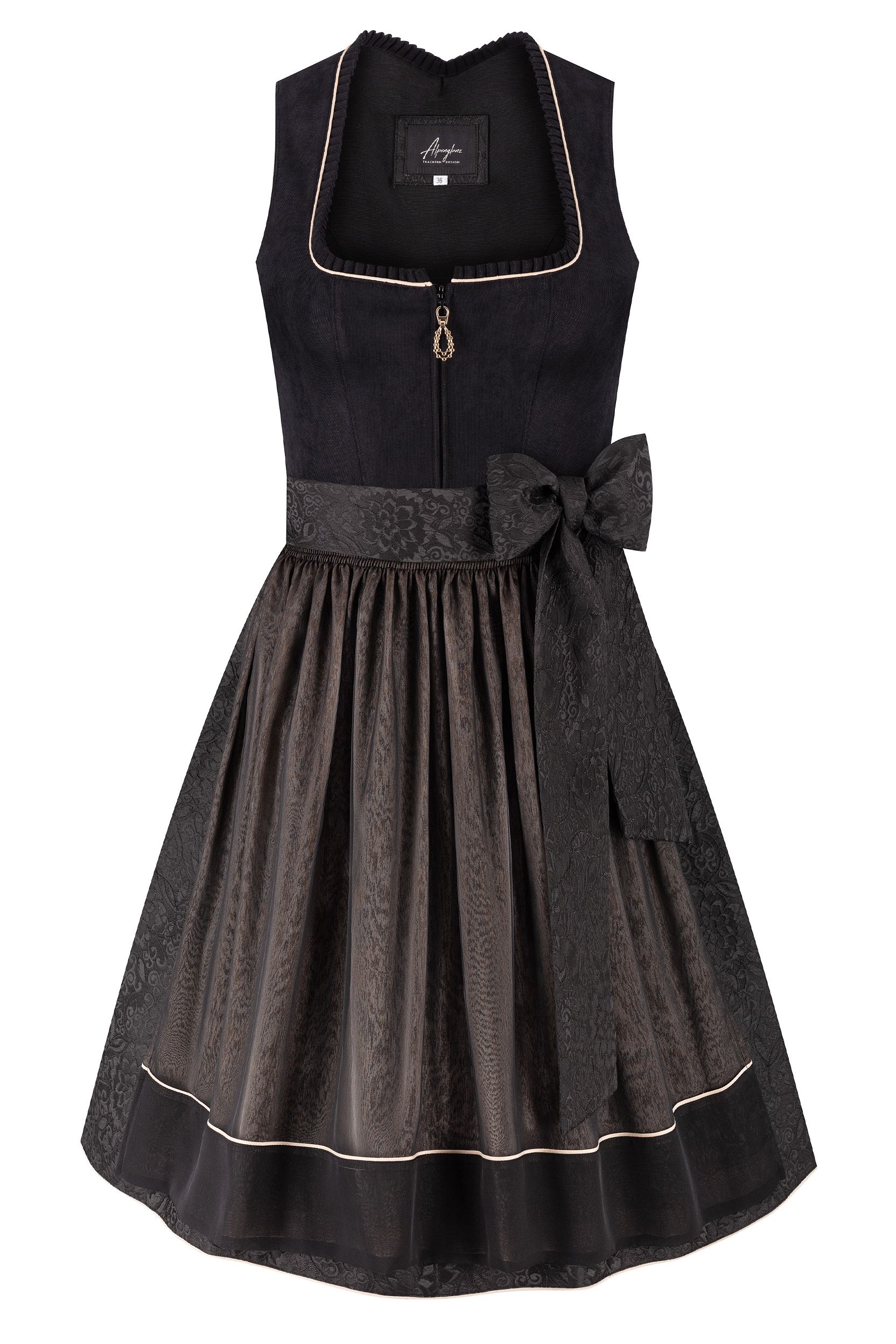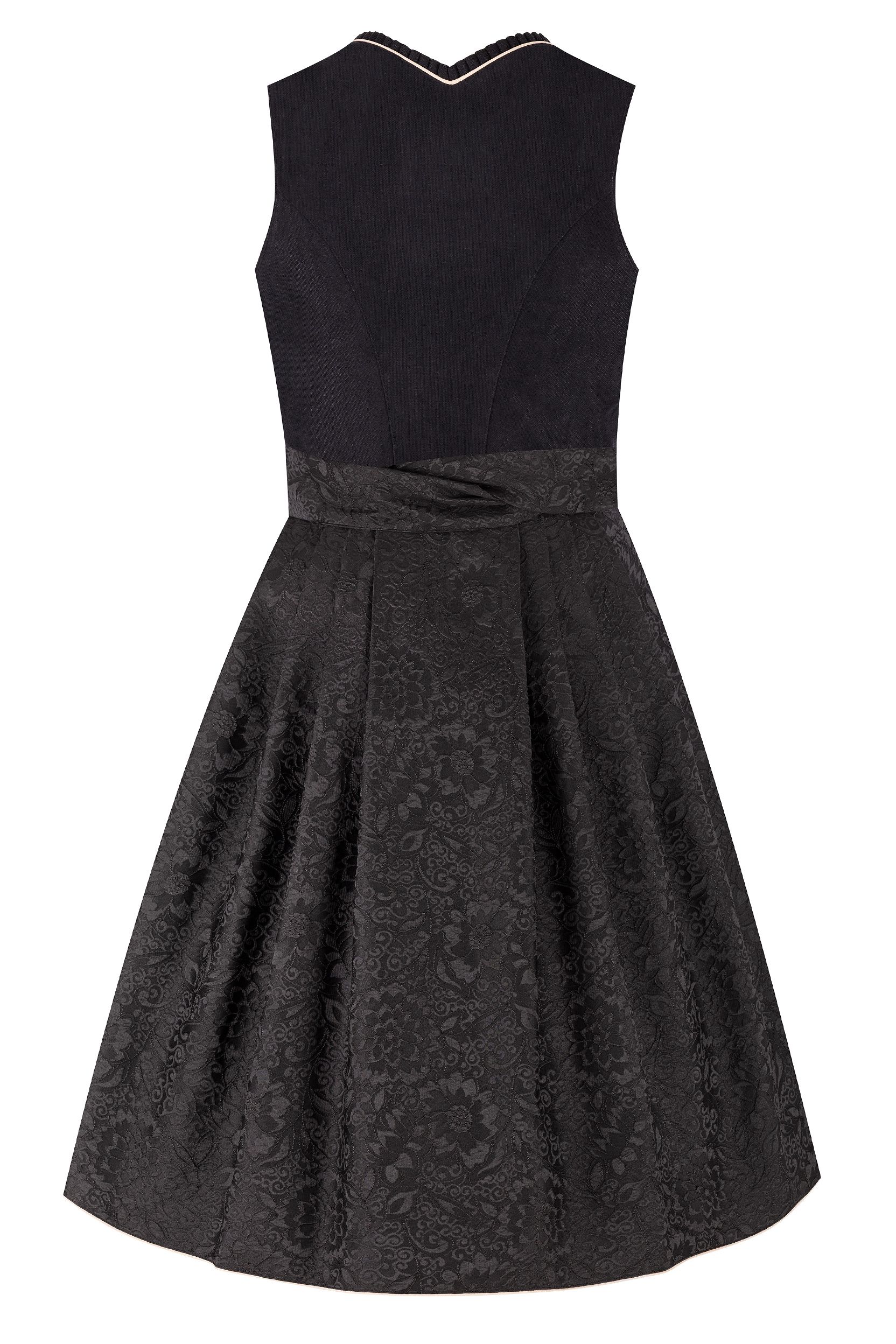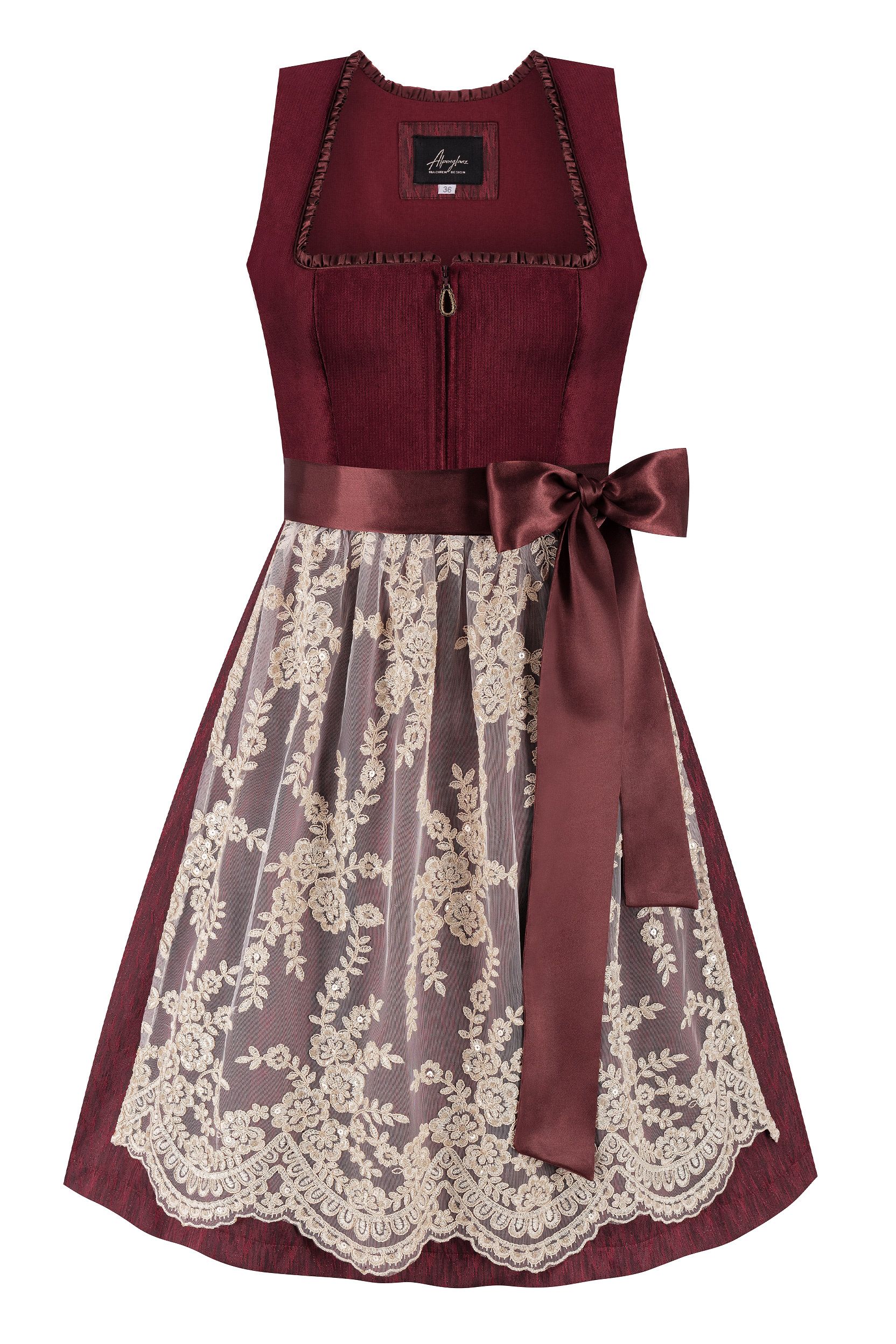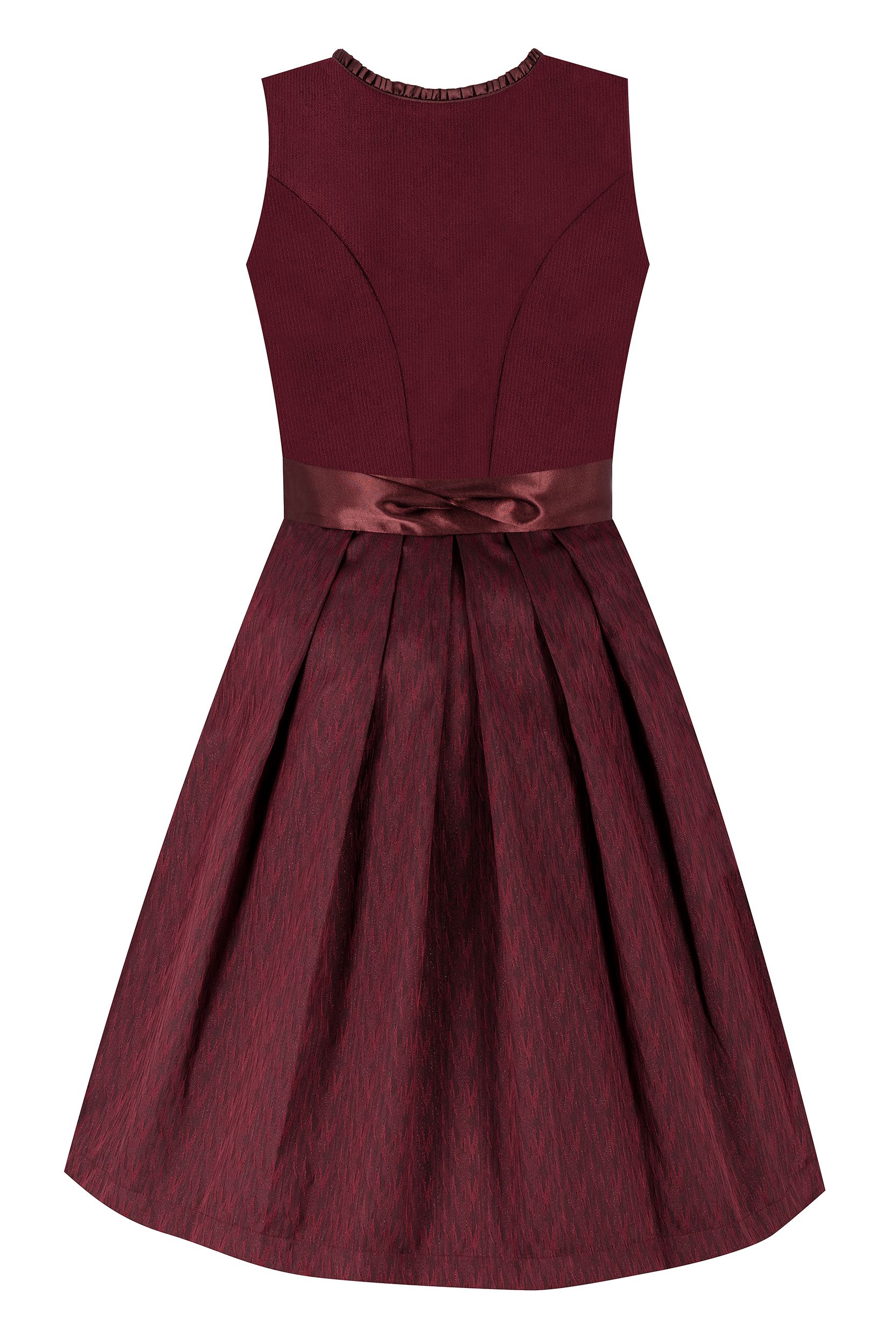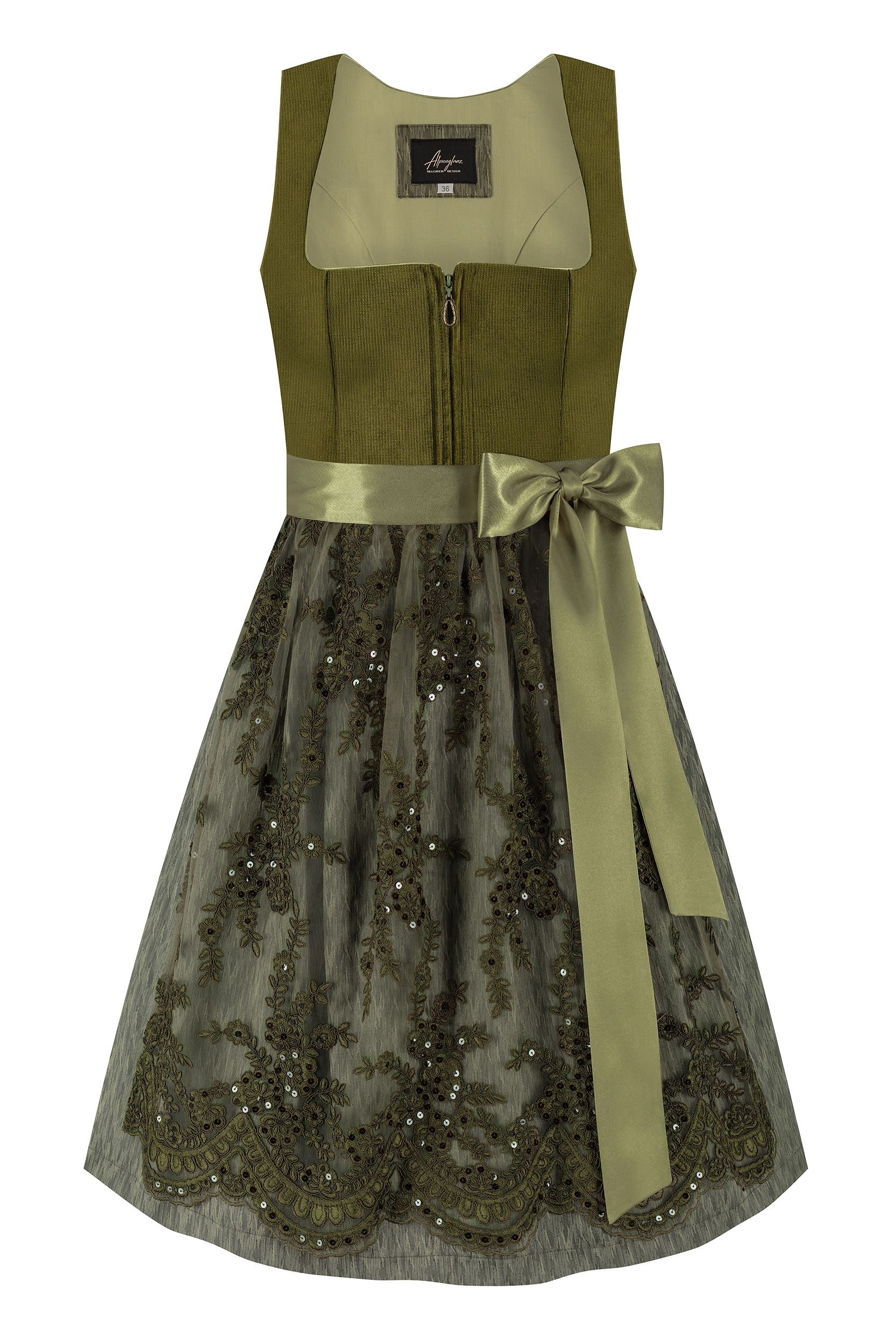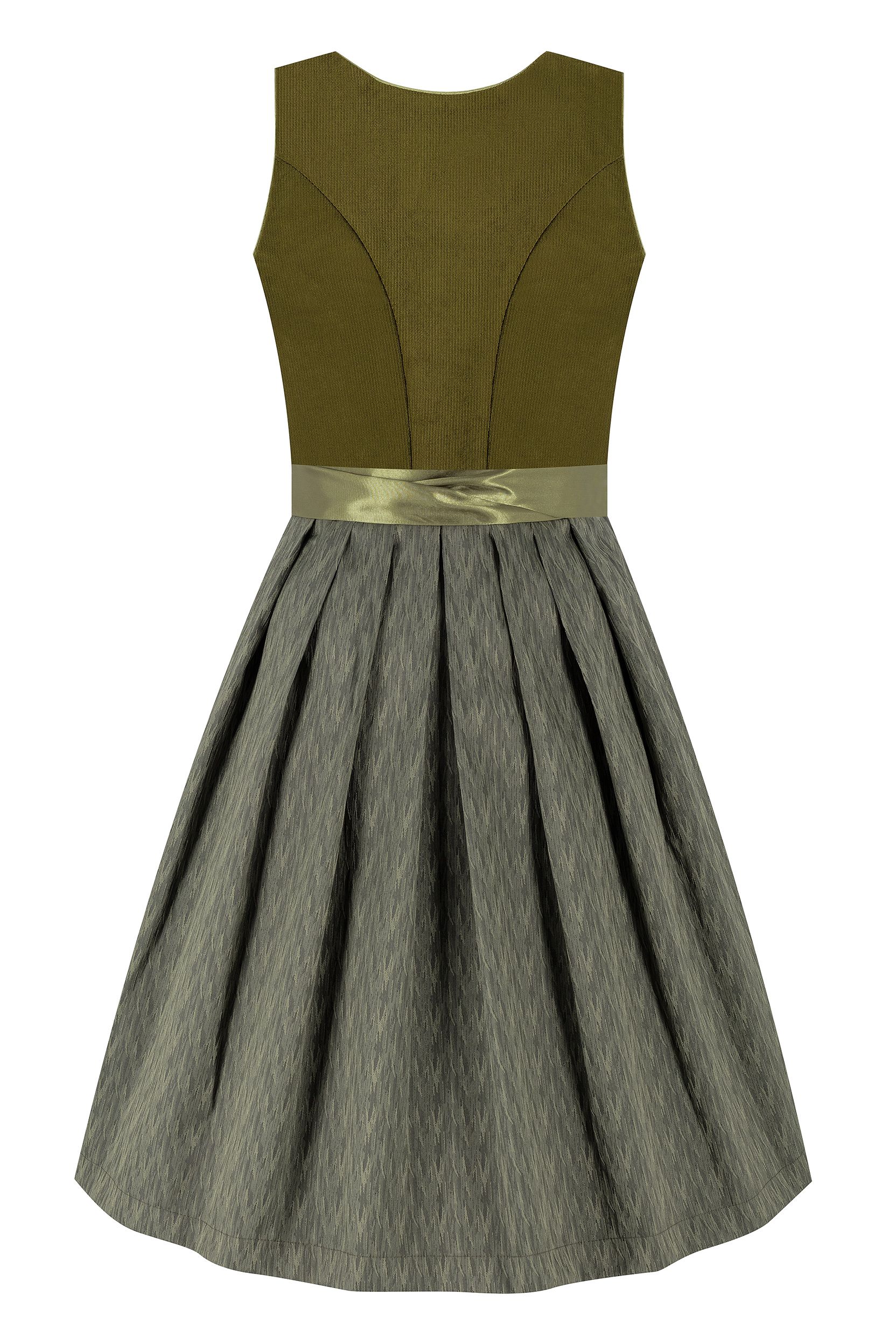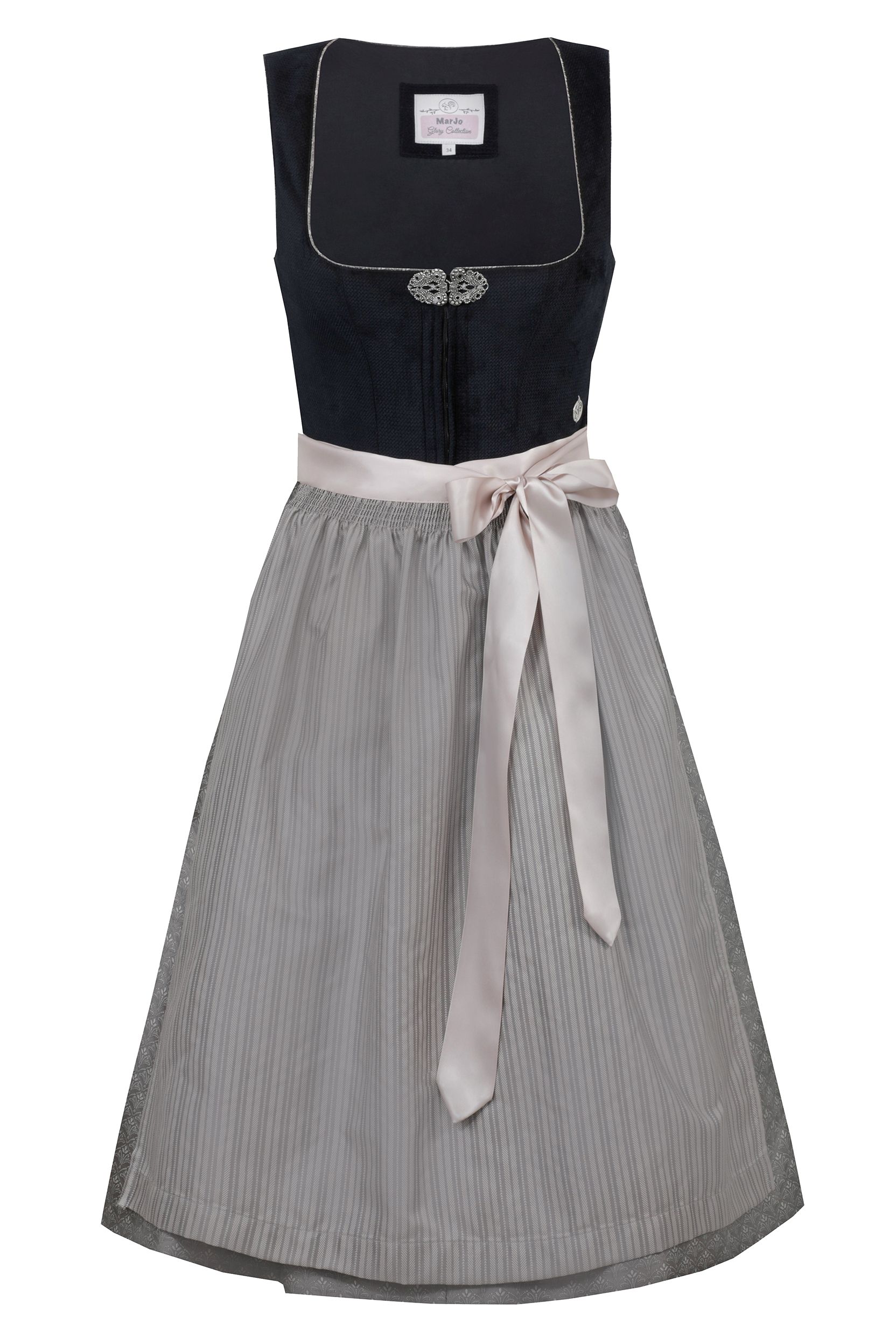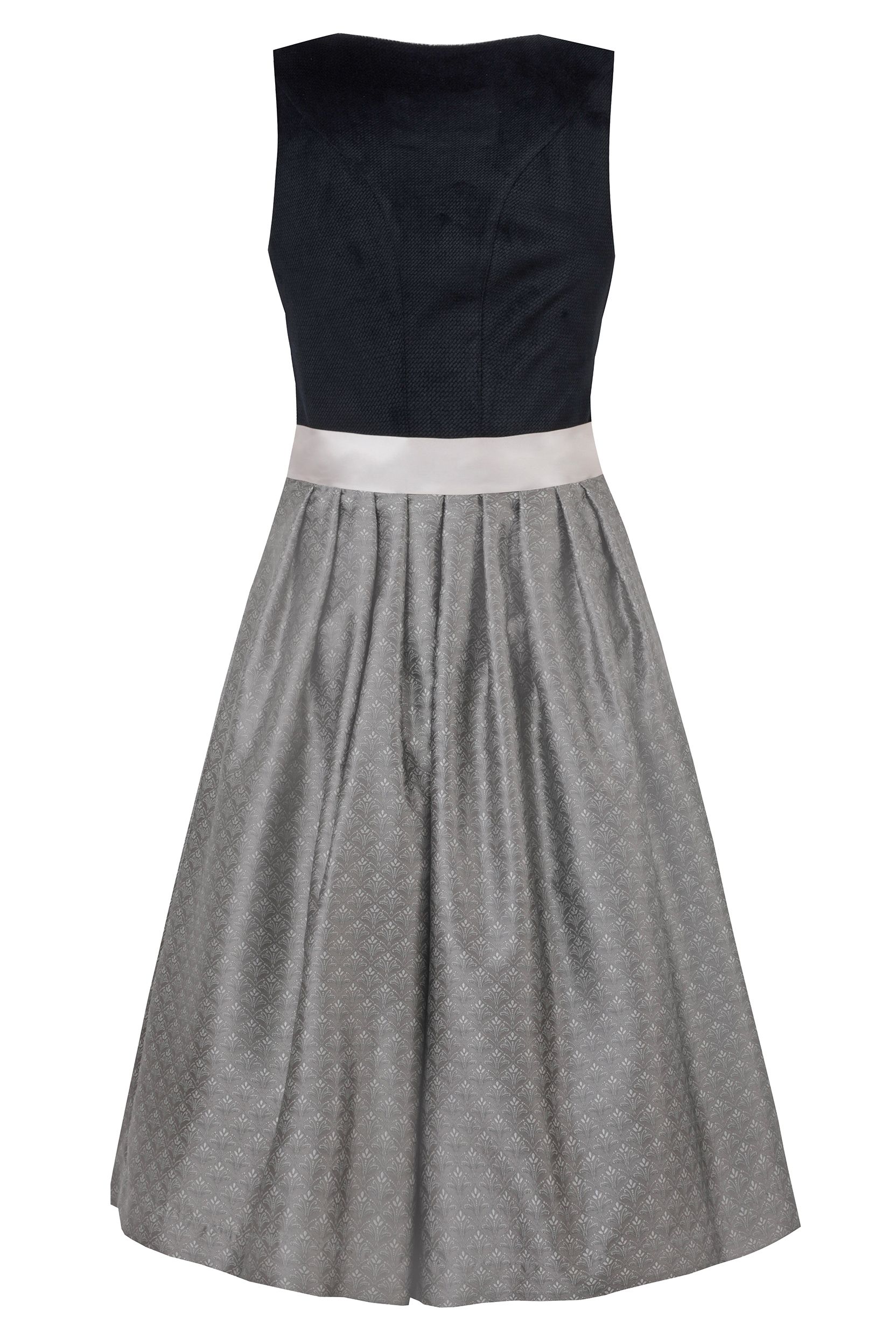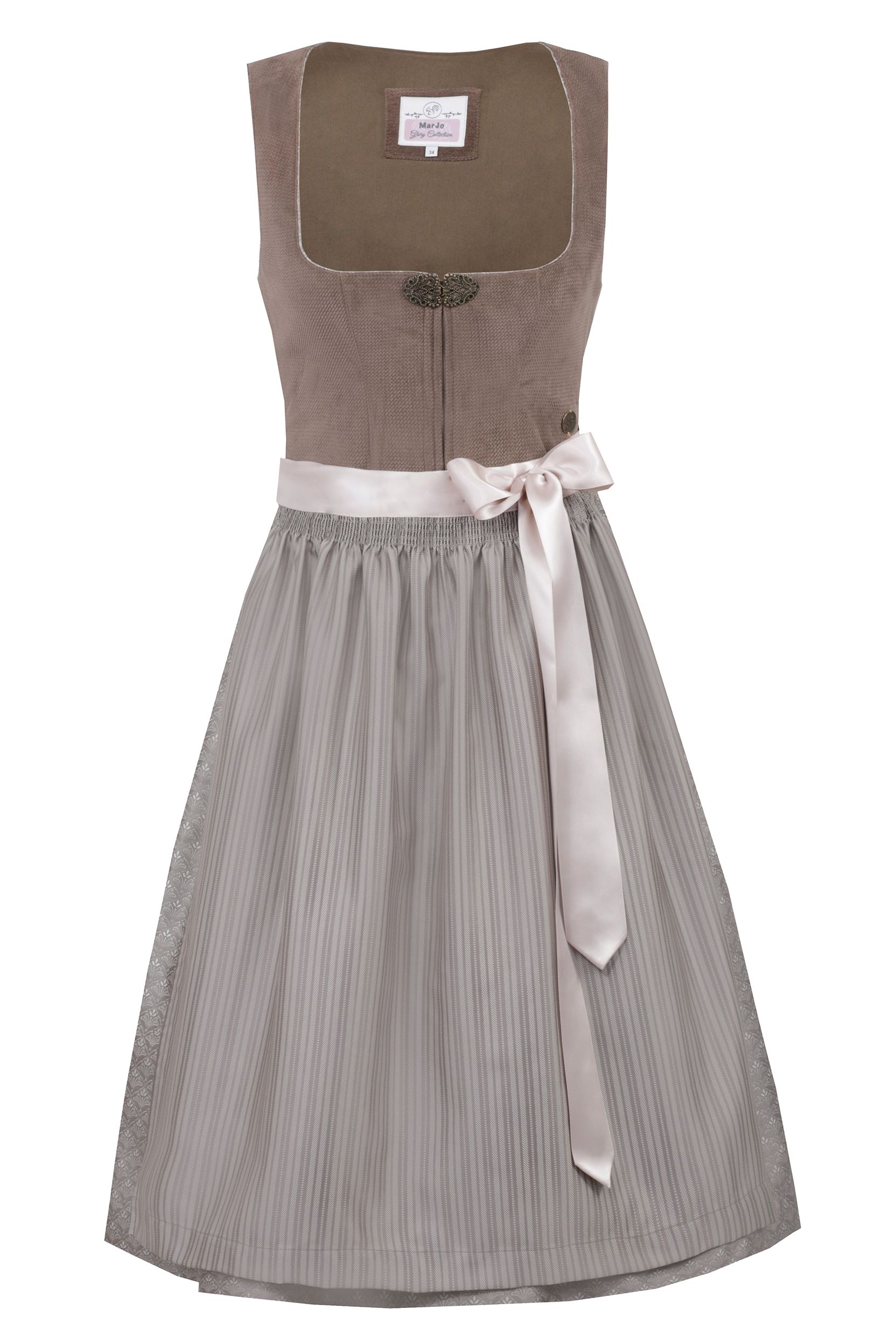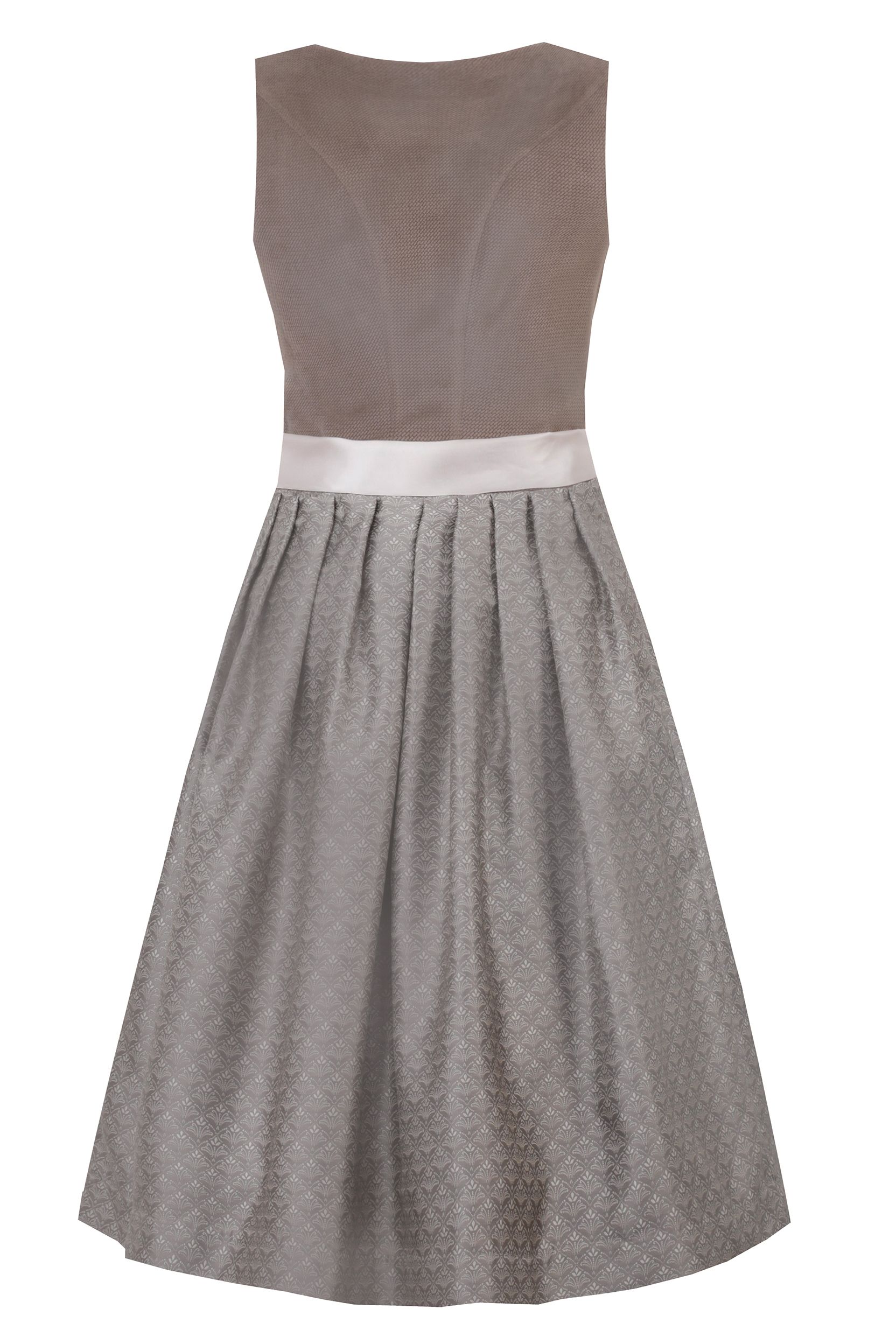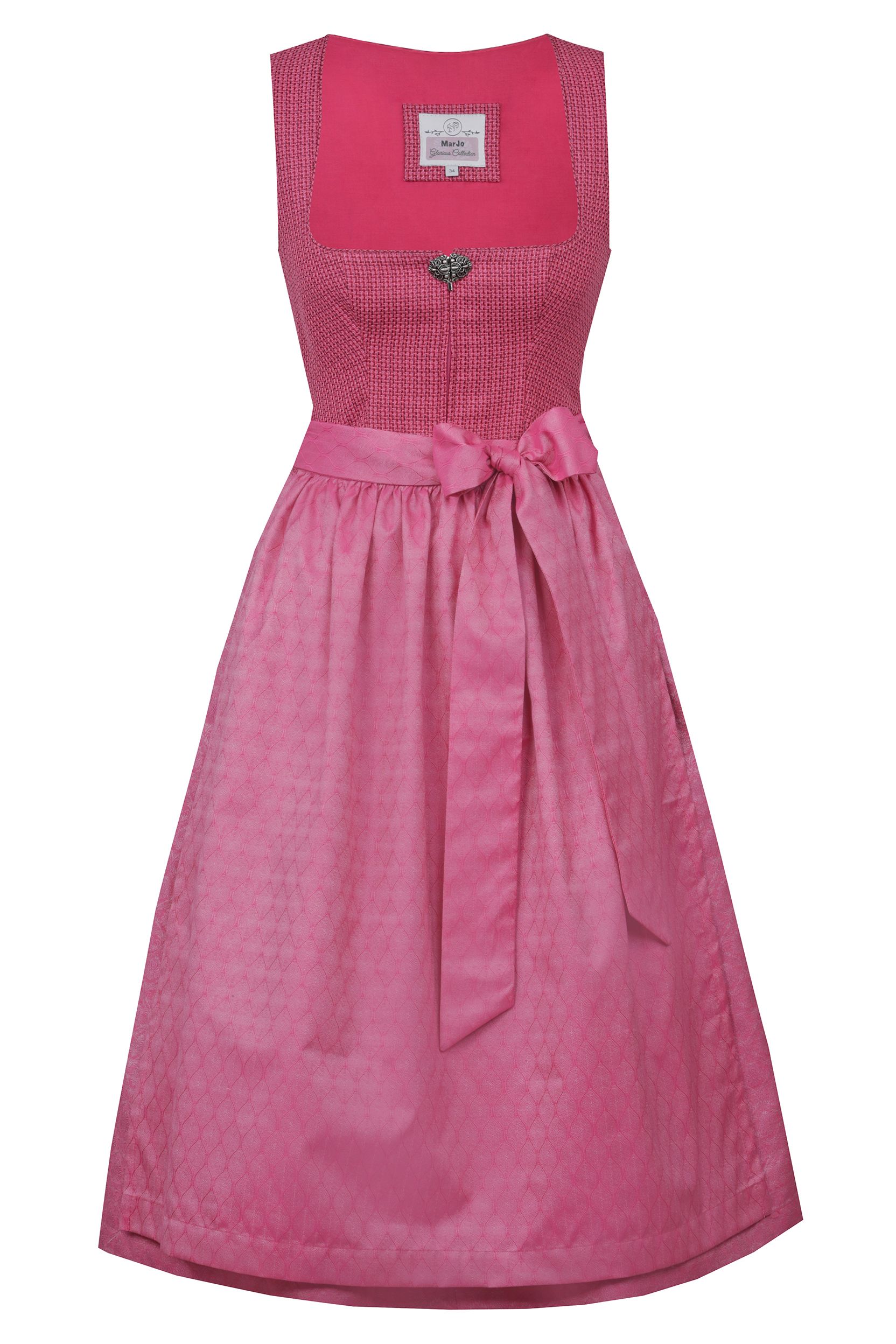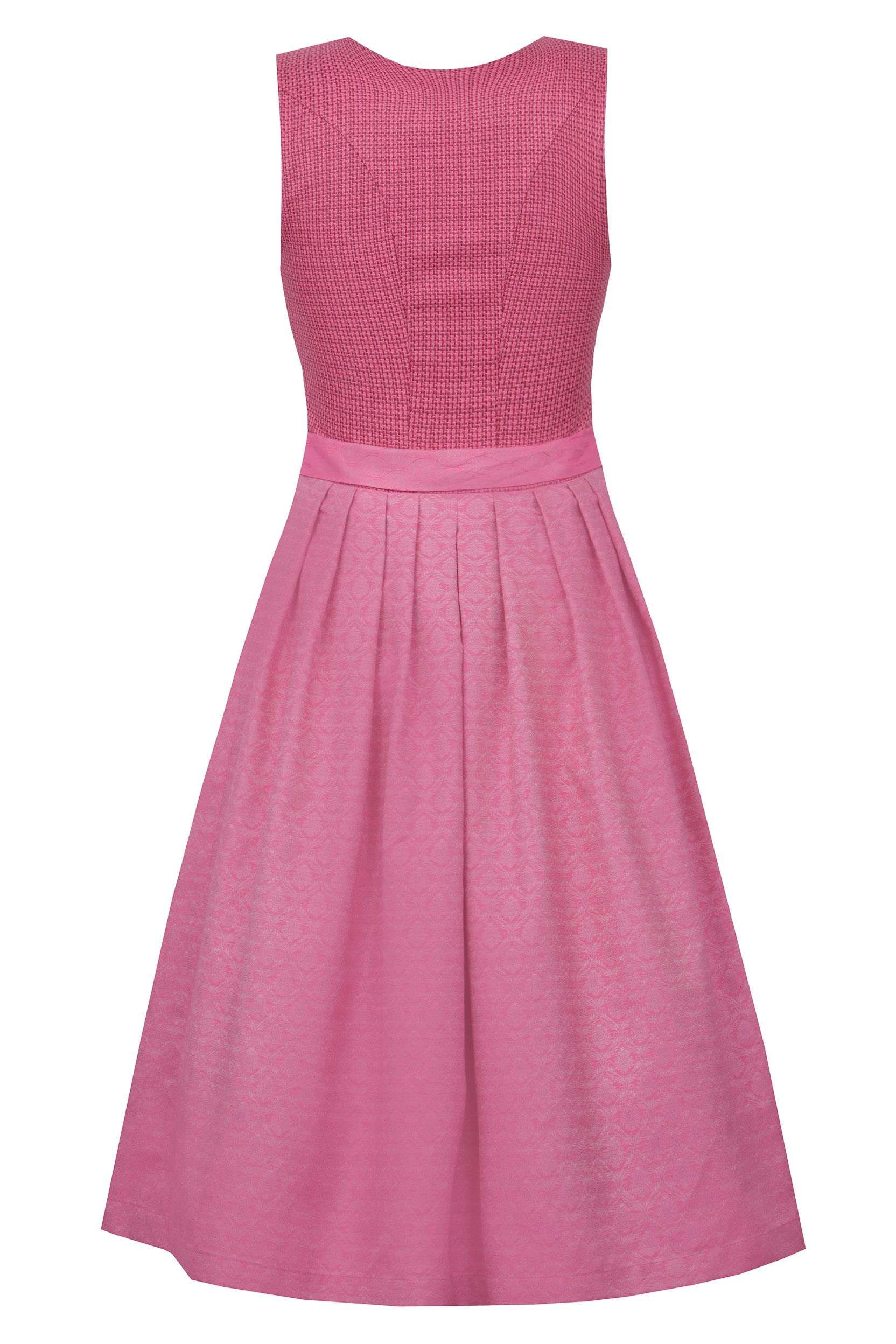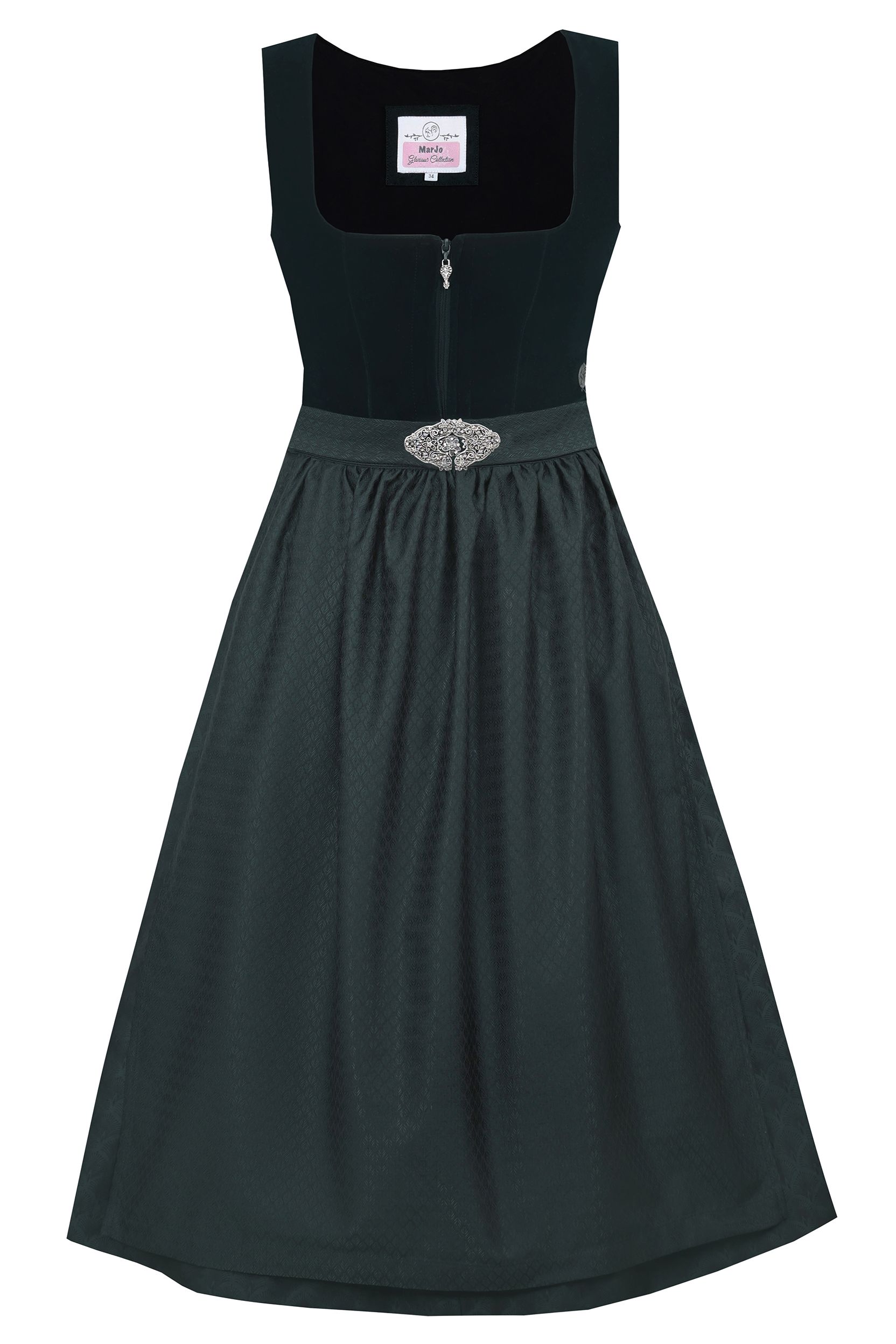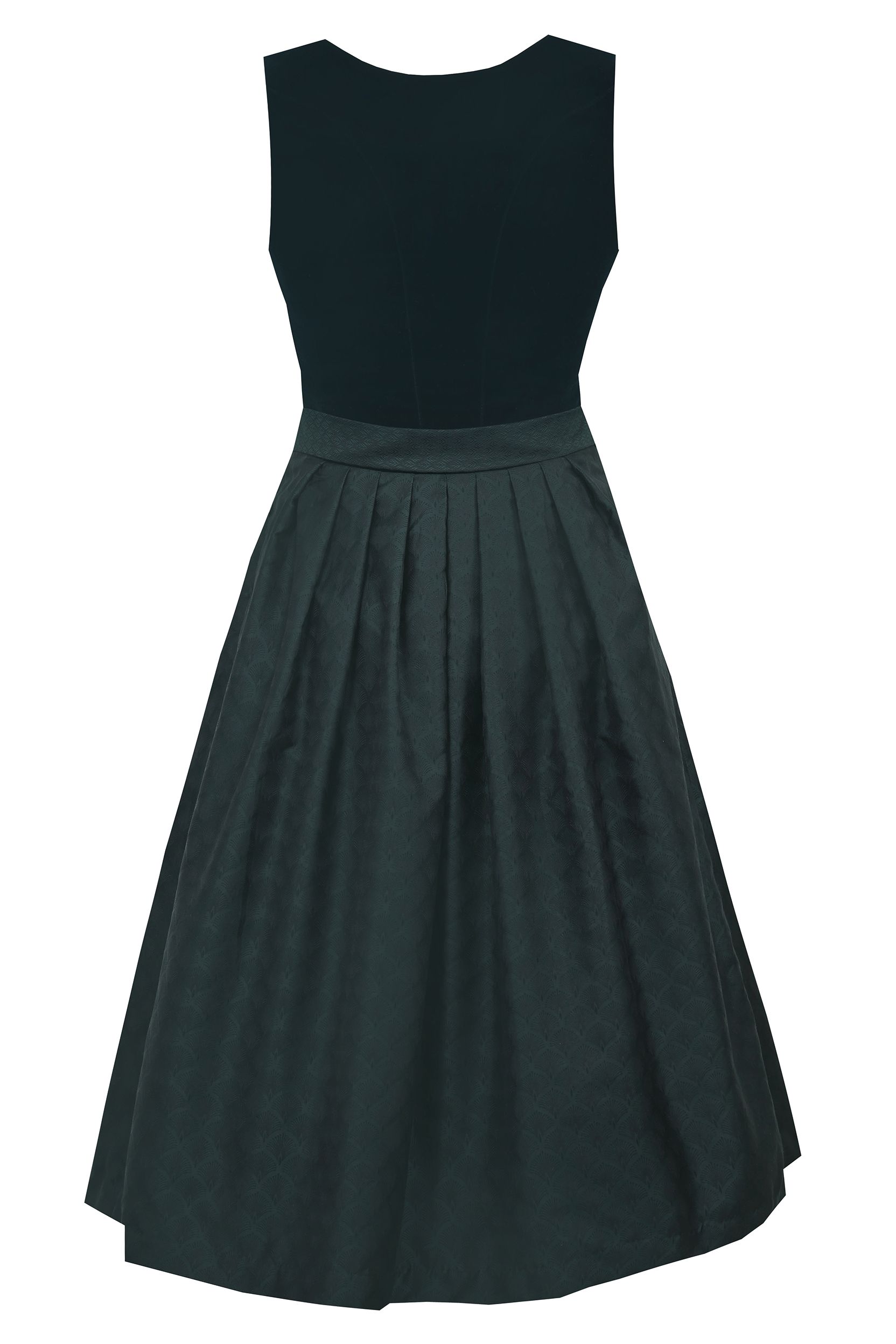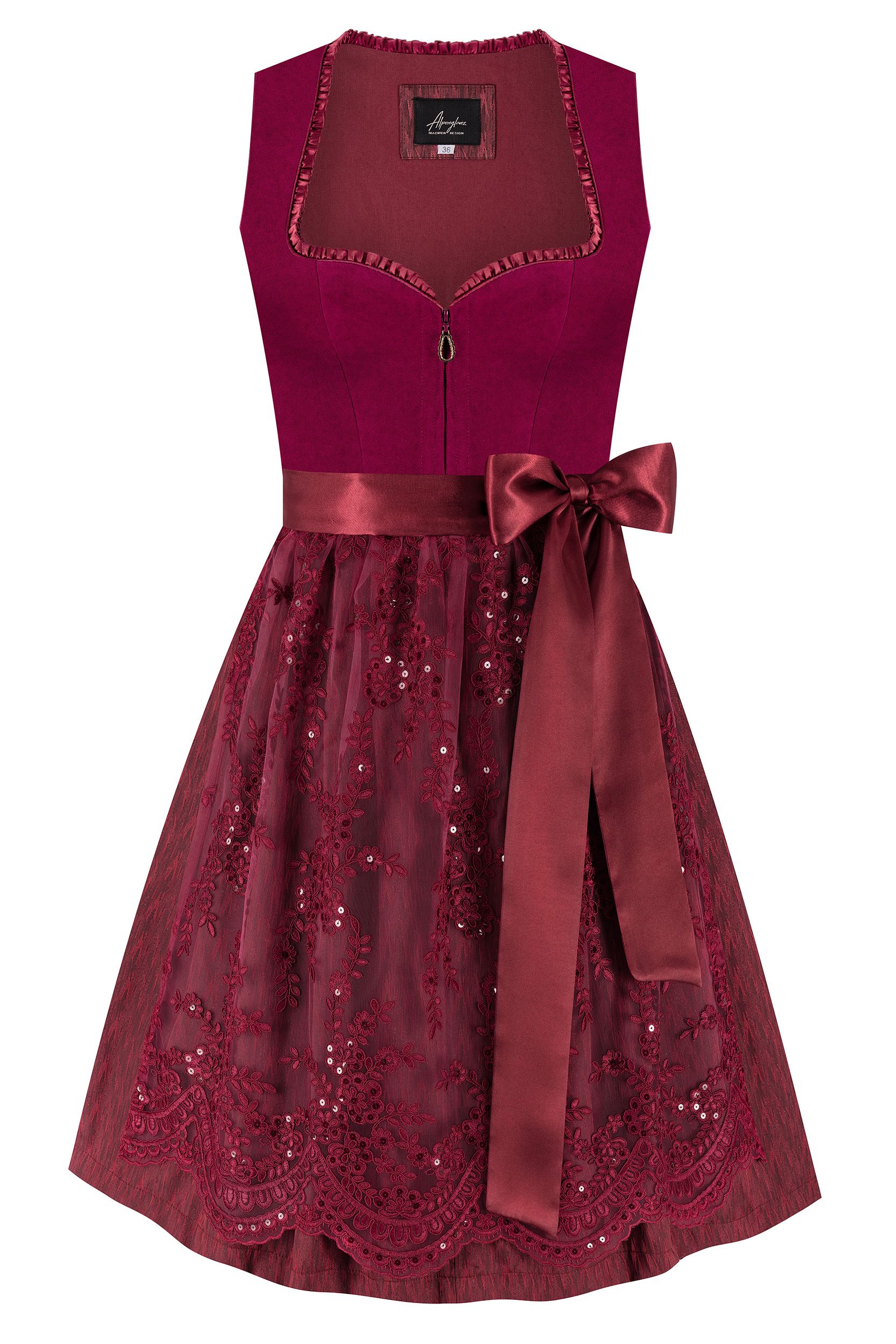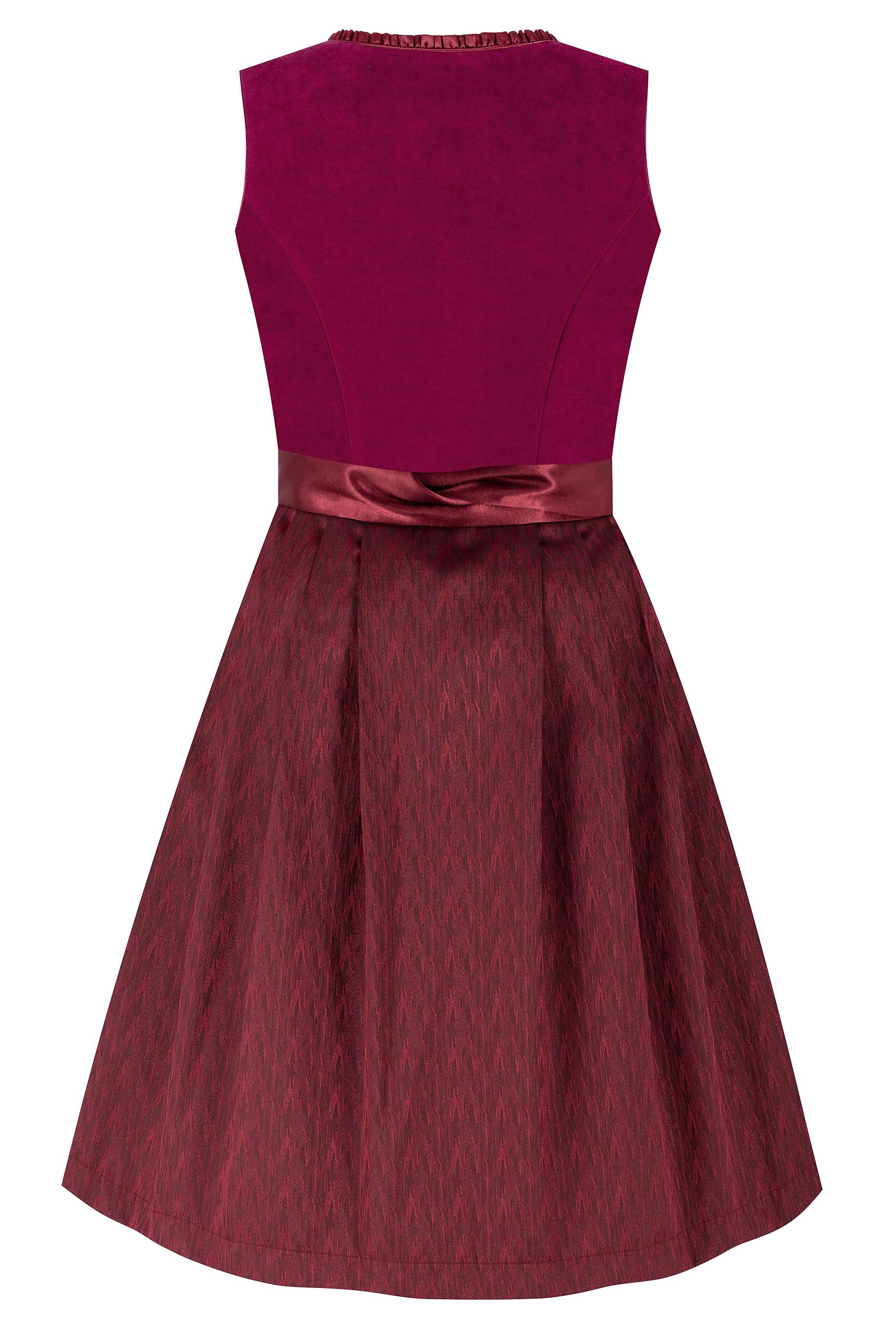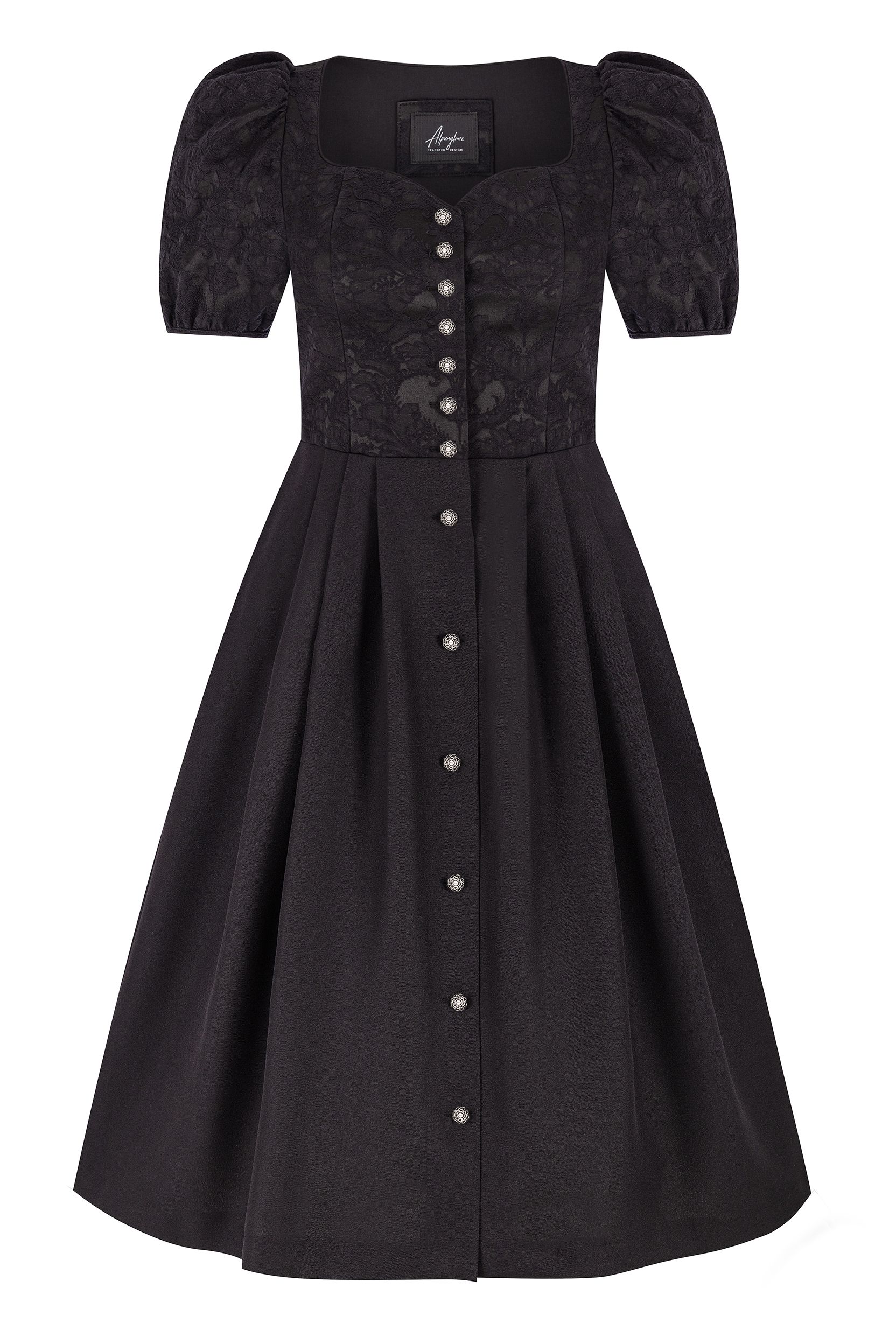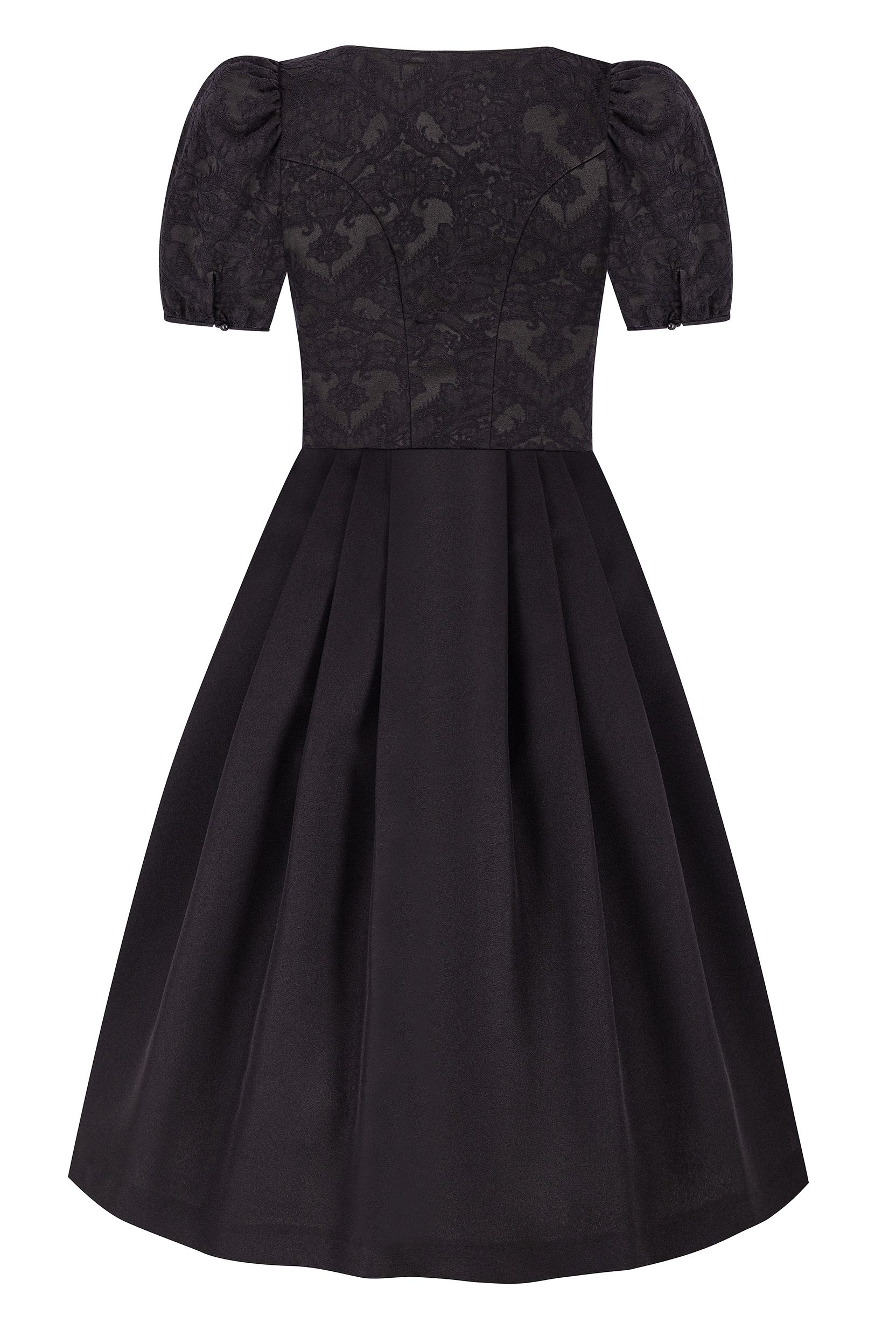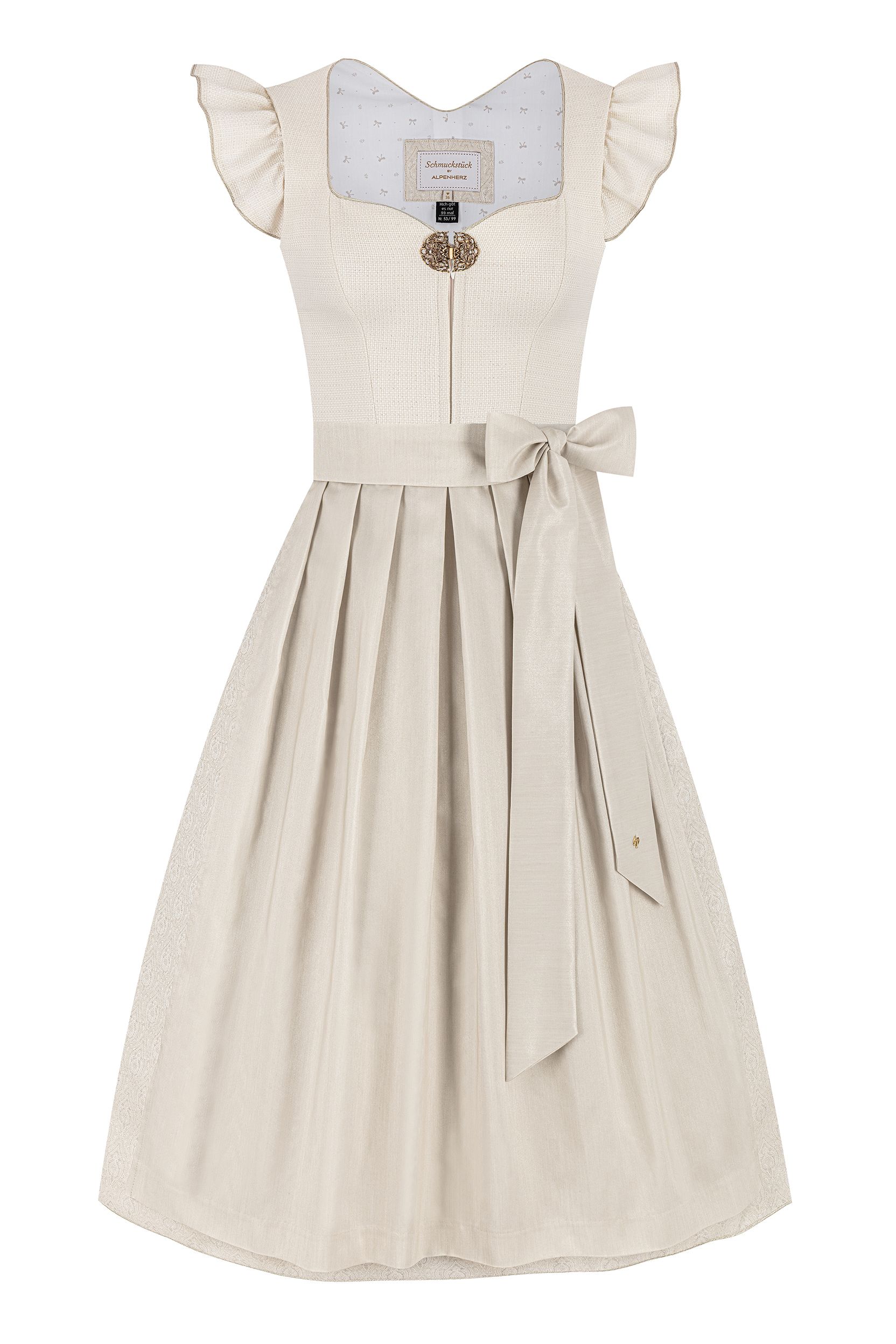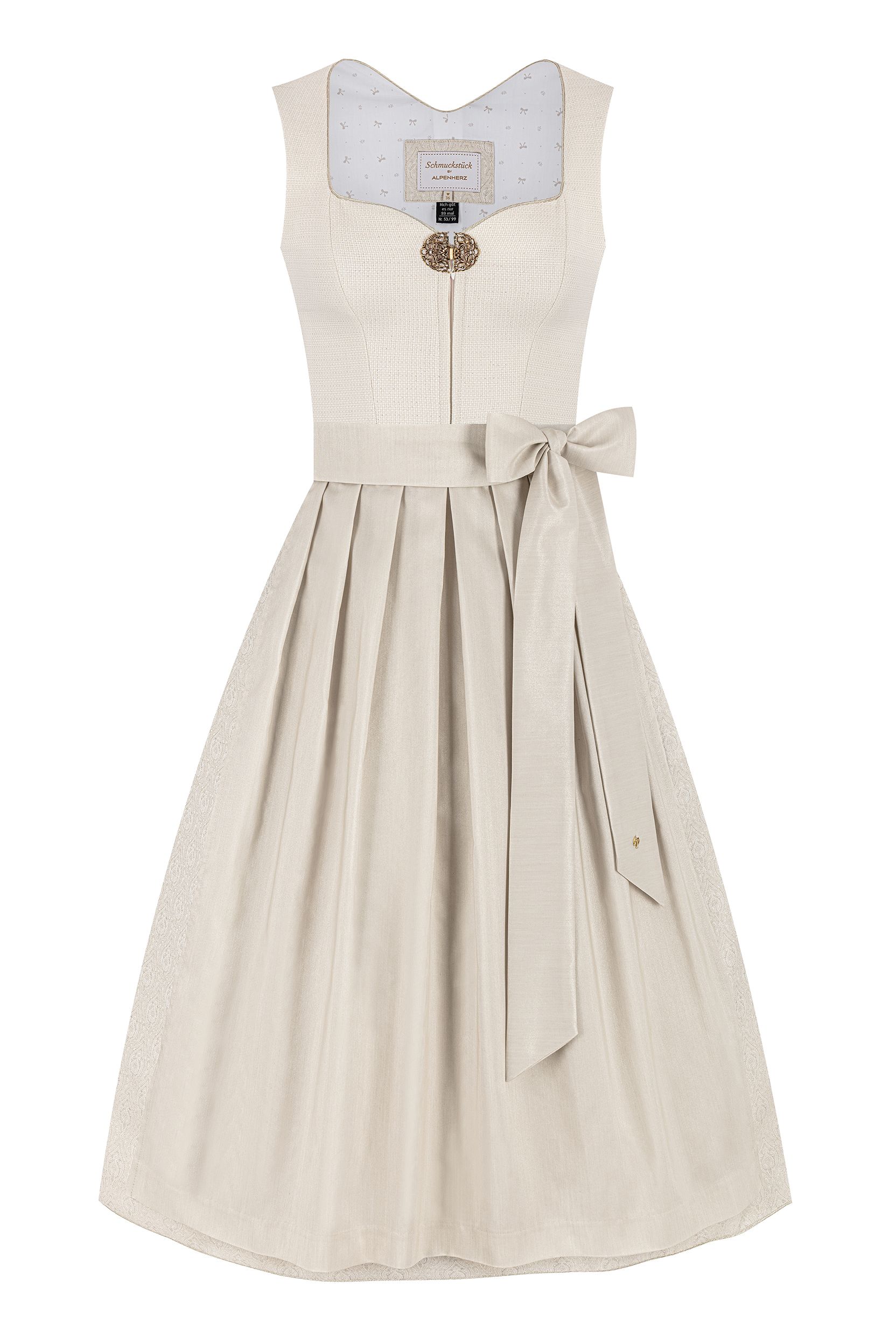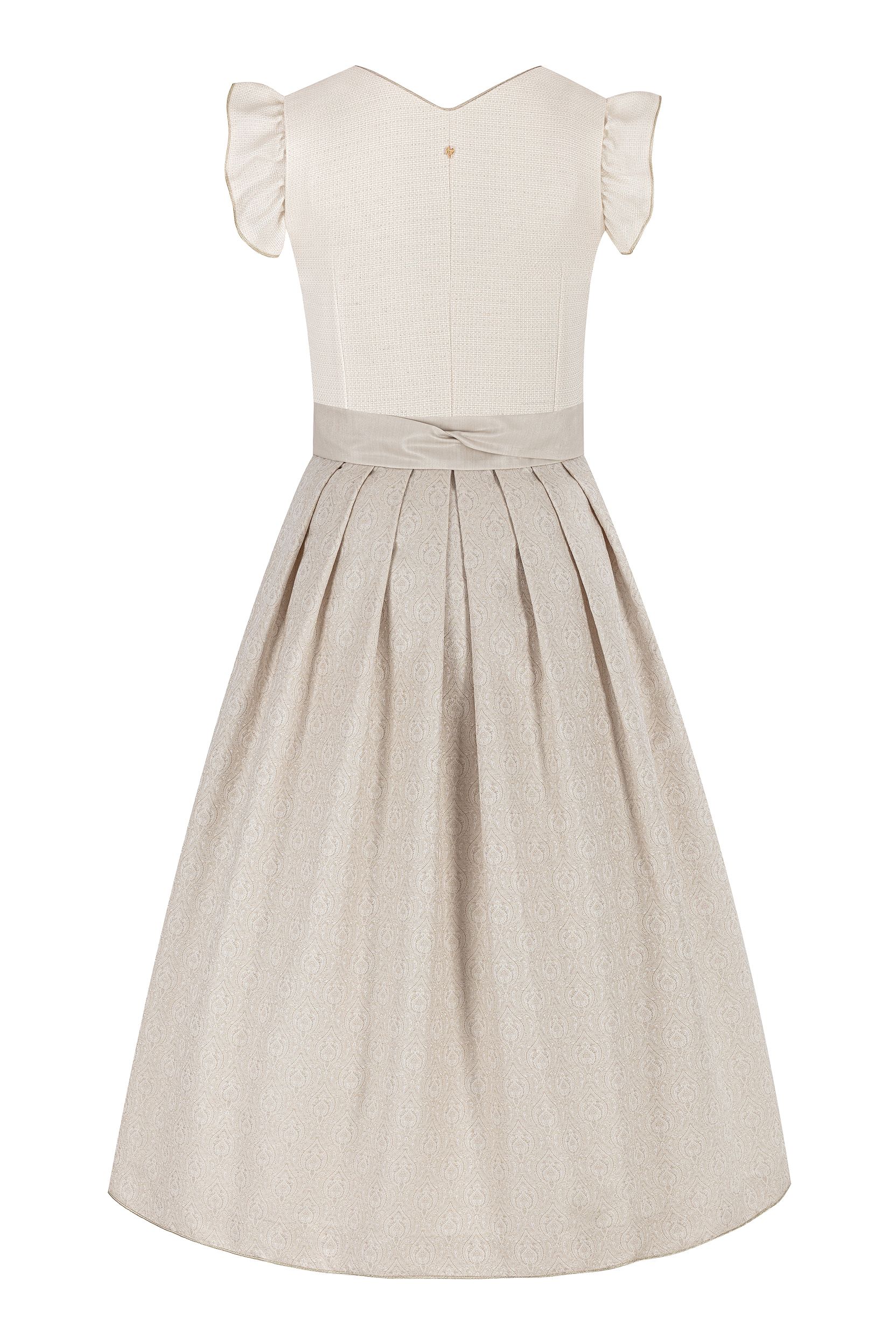The Dirndl: A Stunning Blend of Tradition and Modernity
Huge selection of different dirndls – find & buy your dream dirndl now! Whether it's a mini dirndl, midi dirndl, or traditional long dirndl – with us, you'll find the perfect one for every taste! In our online shop, you'll discover a wide range of stunning dirndls in all lengths and styles. Whether you prefer a dirndl with a deep neckline or a high-neck design, buttoned or laced – we offer you an extensive selection with over 700 new dirndl models every year – including highly limited exclusive collections.
Browse our dirndl section now and find your new perfect dirndl outfit for the folk festival, Oktoberfest, family celebration, or beer garden. You’ll also find your ideal wedding dirndl or designer dirndl in our versatile shop. Here you’ll find even more tips and information all about dirndls. read more...
Are you looking for a stunning dirndl for Oktoberfest or one of the many traditional folk or shooting festivals held throughout the year? Or are you planning your outfit for the spring festival? From colorful dirndls with eye-catching aprons to simple, classic designs – there’s something here for every lover of traditional fashion and every budget! Find your dream dirndl now!
In our dirndl section, we offer a large selection of both modern and timeless traditional dresses. From cotton to designer dirndls, you’ll find everything your heart desires – buy your dirndl now. Get inspired and enjoy browsing through our wide assortment of dirndls and traditional dresses.
Would you like to learn more about the tradition of the dirndl? We’ve compiled the most important facts and background information about this popular traditional dress for you here:
Table of Contents
- The Dirndl – History and Development into a Fashion Statement
- Versatile – The Dirndl Can Be Worn for Many Occasions
- How to Clean a Dirndl – Our Tips
- How and Where to Tie a Dirndl Bow Correctly
- The Skirt Length Makes the Dirndl a Multifunctional Garment
- Which Dirndl Fits Which Body Type?
- What to Wear Under a Dirndl
- Choosing the Right Dirndl for Every Occasion
- Hairstyles for the Dirndl – The Perfect Traditional Look
- Choosing the Right Accessories
- Dirndl Trends 2025 – The Latest Traditional Fashion Highlights
- FAQ About Buying a Dirndl
The Dirndl – History and Development into a Fashion Statement
The dirndl has a long history that begins with its very name. The term “dirndl” originally comes from southern Germany and Austria and is derived from the diminutive of the word “Dirne,” which used to mean a young girl – quite different from the word’s modern meaning. In many German regions during the 19th century, “dirndl” referred to maidservants who worked in agriculture. Their work attire was called a “Dirndlgwand,” later shortened to “dirndl.” So originally, the dirndl was a practical garment for working women.
The materials used were chosen less for regional pride and more for practicality and affordability. Durability and washability were key. The apron served mainly as protection from dirt and wear – meaning it could be replaced or washed without needing to clean the entire dress.
By the 1870s and 1880s, dirndls had become fashionable among the upper class. During the 1930s, the dirndl evolved into a modern trend and gradually spread to all social classes. Its design was updated: necklines became deeper, sleeves shorter, and the waist fitted and often laced or buttoned. Today’s dirndl still follows this silhouette – emphasizing the waist and décolleté with a fitted bodice, wide gathered skirt, and matching apron.
Since the 1990s, dirndls have experienced a true renaissance. Today they are beloved across generations, blending tradition with contemporary style. Modern dirndls are available in countless designs – from simple cotton versions to exclusive designer pieces. Luxury models often feature silk aprons and intricate embroidery, adding a touch of elegance and individuality.
Spring and Oktoberfest celebrations offer plenty of opportunities to wear a dirndl. You can choose between various colors, fabrics, and skirt lengths – from mini dirndls to midi dirndls and the classic long dirndl.
Versatile – The Dirndl Can Be Worn for Many Occasions
Once Oktoberfest season ends, your dirndl doesn’t have to stay hidden in the closet until next year. Dirndls are perfect for many occasions beyond major festivals – they add charm and sophistication to your outfit, even outside Bavaria or Austria. Mini dirndls, for instance, often look like chic cocktail dresses inspired by traditional design.
Depending on the event, your dirndl can be simple and understated or elegant and heavily embellished. The simplest style is the “wash dirndl” – often found in classic colors like green, red, or blue, sometimes with check patterns. Its advantage: it’s completely machine washable, including the apron. Minimalist yet graceful, it’s ideal for summer or casual gatherings.
More elaborate dirndls are often made of premium fabrics and feature decorative silk or lace aprons, shimmering details, and fine craftsmanship. Young, modern labels such as CocoVero or Lola Paltinger celebrate great success with their creative designs. Celebrities frequently wear designer dirndls to exclusive events, proving that traditional fashion has become truly modern. Particularly in southern Germany, wearing traditional attire for formal events is common. Even weddings embrace the look – bridal dirndls offer a unique alternative to classic gowns, and grooms often coordinate their outfits to match.
How to Clean a Dirndl – Our Tips
To keep your dirndl looking beautiful, you should clean and care for it regularly. Most dirndls – especially “wash dirndls” – can be washed in the machine. When in doubt, check the care label provided by the manufacturer.
General care instructions for washing your dirndl:
- Always wash the dress and apron separately.
- Use a mild detergent and avoid brighteners or bleach.
- Do not soak or leave the garment in the washer for too long to prevent color bleeding.
- Never tumble dry – hang it on a hanger instead.
- Gently reshape the fabric while damp before drying.
If you own a designer dirndl or are unsure about cleaning it, take it to a professional cleaner. They’ll handle it carefully, ensuring optimal results. With proper maintenance, your dirndl will stay beautiful for years.
How and Where to Tie a Dirndl Bow Correctly
The position of your apron bow carries a special meaning. Follow these traditional rules to avoid misunderstandings and send the right message:
- Front right (from your perspective): You are taken or married – no flirting, please.
- Front left: You are single – open to flirtation!
- Center front: Traditionally meant virginity; today, usually a neutral or private relationship status.
- Center back: Worn by widows or waitresses – practical and less symbolic.
How to Tie a Dirndl Bow – Simple and Elegant
Besides placement, technique matters too – especially for formal or traditional occasions.
Step-by-step guide to tying your dirndl bow:
- Ensure the ribbons are neatly ironed.
- Place the apron properly; the ribbons should align perfectly across your back.
Expert tip: A small piece of double-sided tape between the ribbons helps prevent slipping. - Cross the ribbons neatly without wrinkles. Avoid double knots.
- Tie the bow at waist height; the loops shouldn’t be larger than the ribbon ends.
- Finally, fluff the loops evenly for a balanced, full bow.
The Skirt Length Makes the Dirndl a Multifunctional Garment
A dirndl flatters every body shape and can be adapted thanks to the variety of skirt lengths.
Mini Dirndl: Sporty and Elegant
Mini dirndls are ideal for younger women and girls. They look sporty, stylish, and slightly playful – tradition meets modern flair. For women up to about 170 cm (5’7”), a skirt length of 50–55 cm is ideal: great for dancing, cool on summer days, and perfect for showing off your legs.
Classic Midi Dirndl: Always a Great Choice
The classic midi dirndl, with a skirt length between 58–84 cm, ends just below the knee – flattering for all figures. It highlights feminine curves and creates graceful movement while dancing. Midi dirndls are perfect for weddings, birthdays, and festive occasions. Paired with traditional stockings or a stylish blouse, the look is complete. With a midi dirndl, you’re sure to turn heads – shop online now!
Long Dirndl: Traditional Elegance
The long dirndl is the most traditional style, with a skirt and apron about 85 cm or longer. It ends just above the ankles, forming a beautiful bell shape that enhances your figure. High-quality materials ensure elegance and comfort. Perfect for tall women and special occasions such as weddings, theater galas, or formal events.
Which Dirndl Fits Which Body Type?
Dirndls suit every woman. With the right length and accessories, every figure can shine. Here’s a quick guide by body shape:
- A-shape: Narrow shoulders, wider hips. Accentuate your waist with a fitted bodice. A puffed-sleeve blouse balances proportions. High heels elongate your legs.
- H-shape: Straight figure with little waist definition. Mini or midi dirndls help create curves. Highlight your décolleté for added femininity.
- Y-shape: Broader shoulders, narrower hips. Emphasize your neckline to balance proportions. Shorter skirts draw attention to slim legs.
- O-shape: Rounder midsection. Blouses with sleeves cover upper arms, darker bodices create a slimming effect, and focus on your legs and neckline.
- X-shape: Hourglass figure. The dirndl naturally flatters this body type – emphasize the waist for best results.
What to Wear Under a Dirndl
No dirndl outfit is complete without the right undergarments. Depending on weather and occasion, you can complement your outfit with traditional stockings or a warm petticoat for colder days.
Special dirndl bras are designed to create the perfect neckline. Their unique cut lifts and shapes the bust for an ideal fit. Available as padded push-ups or in delicate lace – in white, cream, or black.
Choosing the Right Dirndl for Every Occasion
A dirndl is wonderfully versatile. With the right accessories, you can tailor your look to any event:
- Party look: Perfect for Oktoberfest or themed parties. Bright colors, embroidery, and lace add flair. Mini or midi dirndls with lightweight blouses are great for long nights.
- Elegant and chic: Ideal for weddings or formal gatherings. Opt for high-quality fabrics and soft pastel tones. A lace apron or ornate blouse completes the look.
- Rustic country style: Traditional and down-to-earth in classic tones. Alternatively, pair a women’s leather trouser with a cute blouse for a feminine twist.
Hairstyles for the Dirndl – The Perfect Traditional Look
Once your outfit is ready, the right hairstyle completes your look. Here are some timeless options:
- Braided styles: Perfect for long hair – try French, Dutch, or double braids. Half-up braided styles also work beautifully.
- Updos: Elegant for formal occasions. Add flowers or clips for detail. If your dirndl is ornate, keep the hairstyle simple.
- Loose hair: Soft waves or curls paired with a floral crown create a romantic look.
- Short hair: Even short hairstyles can look traditional with braided details, hairbands, or flower accessories.
Choosing the Right Accessories
The right accessories perfect your traditional look:
- Dirndl blouse: A must-have that frames the neckline and adds festive elegance.
- Shoes: From embroidered pumps to chic sneakers or traditional boots – choose what fits your style and comfort.
- Bag: A small handbag that matches your colors and holds essentials like your phone, keys, and cash.
- Shawl or scarf: Adds warmth on cooler days – choose matching tones for a coordinated look.
- Jewelry: Traditional pieces with hearts, edelweiss, or deer motifs are timeless. Chokers and subtle flower crowns add a touch of elegance.
Dirndl Trends 2025 – The Latest Traditional Fashion Highlights
Spring and summer bring fresh designs and soft fabrics – perfect for festivals, weddings, and garden parties. Here’s what’s trending in 2025:
Dirndl Necklines – From V-Neck to High-Collar
High-neck dirndls with V-shaped or stand-up collars are especially popular. Deep-cut dirndls paired with delicate lace blouses are also trendy – classic with a touch of vintage charm.
Choosing the Right Dirndl Blouse
Short sleeves or flutter sleeves emphasize the waistline. A high-neck lace blouse under a deep neckline adds a modern contrast. Transparent lace in white, cream, or black is especially elegant. Rule of thumb: the simpler the dirndl, the more elaborate the blouse can be.
Apron Variations
From eyelet embroidery to fine lace or beaded details – aprons are more decorative than ever. Cotton dirndls often feature a dirndl clasp instead of a bow, creating a sophisticated look.
Tip: A new lace apron can instantly transform a simple dirndl.
Skirt Length – The Classic Midi Dirndl
All lengths are in style – mini, midi, or long. The midi dirndl (65–70 cm) remains the most popular, as it flatters nearly every woman and suits any occasion.
Tone-on-Tone Looks
Subtle elegance is key. Alongside deep blue and ruby red, soft pastel tones like powder pink, sage, or sky gray are trending. Metallic shades like silver, bronze, and taupe bring sophistication and harmony. Material mixing – such as pairing a simple dress with a statement apron – adds modern flair.
Attention to Detail
Decorative apron ties, antique silver clasps, and vintage buttons bring charm to simple designs. Discover our limited-edition brands – “Lieblingsgwand,” “edelheiss,” “Alpenglanz,” “Herzglück,” and “Moser” – so you’ll not only look beautiful but also unique in your new dirndl!
Discover more modern traditional fashion trends here!
Get Inspired & Shop Now
Get inspired and start shopping now in our MOSER online store! Buy your dirndl quickly & easily! Find your perfect new dirndl that will make you the star of Oktoberfest or any festival!
Do you have any questions or need advice? We’re happy to help! Contact us by phone or email at kontakt@trachten.de.
FAQ About Buying a Dirndl
Which Dirndl Length Suits Me Best?
Mini dirndls create a youthful, sporty look, while midi dirndls flatter every figure. Long dirndls offer timeless elegance and a more traditional appearance.
How Do I Find the Right Dirndl Size?
Simply measure your bust, waist, and hips, then compare with our size chart. Note that dirndls tend to run tighter than regular clothing. If you’re unsure about sizing or fit, contact us – we’ll gladly help you find the perfect cut, color, and size.
What Do You Wear Under a Dirndl?
A dirndl blouse is essential under every dirndl. A specially designed dirndl bra helps create the perfect neckline and provides optimal support.

